24 Most Underrated Places in Europe (City Break Edition)
With their jaw-dropping architecture, vibrant culture, and ancient histories, beautiful European cities have always fascinated me, and captured the hearts of travellers from around the world.
While the most famous destinations like Paris, Rome, and London might often command the spotlight, there are hundreds of underrated places in Europe that are equally as impressive, and promise fewer crowds and a more intimate and authentic experience.
I am of the firm belief that the best travel happens off the beaten path in Europe, when you leave the hordes of tourists behind.
From the charming streets of Tbilisi, to the medieval allure of Brno, these underrated cities in Europe are some of the most rewarding places to travel to.
So, if you are interested in leaving the tourist hotspots behind and discovering some truly hidden gems, just keep reading, because I’m going to share the best of off the beaten path Europe.
Please note that this article is exclusively about city break destinations. There are hundreds of villages and towns that also qualify as hidden gems in Europe, but you won’t find them in this post.
24 Most Underrated Places in Europe
1. Tbilisi, Georgia
Tbilisi, capital of Georgia, is a city at the crossroads of Europe and Asia, where history and modernity converge against a backdrop of rugged mountains and winding rivers.
I spent just over a week in Tbilisi at the start of this year, and I immediately fell in love with this unusual city.
Tbilisi’s diverse architecture reflects its complex history, with Persian fortresses, Russian Orthodox churches, and Soviet Modernist structures standing side by side. The Narikala Fortress offers panoramic views of a strange cityscape that blends the futuristic with the classic.
Be sure to wander the narrow alleys of Old Tbilisi, where wooden balconies and cobblestone streets tell the tale of Tbilisi’s 1500-year history, and experience the sulphur baths in the Abanotubani neighbourhood, which offer a glimpse into the longstanding traditions of Georgian culture.
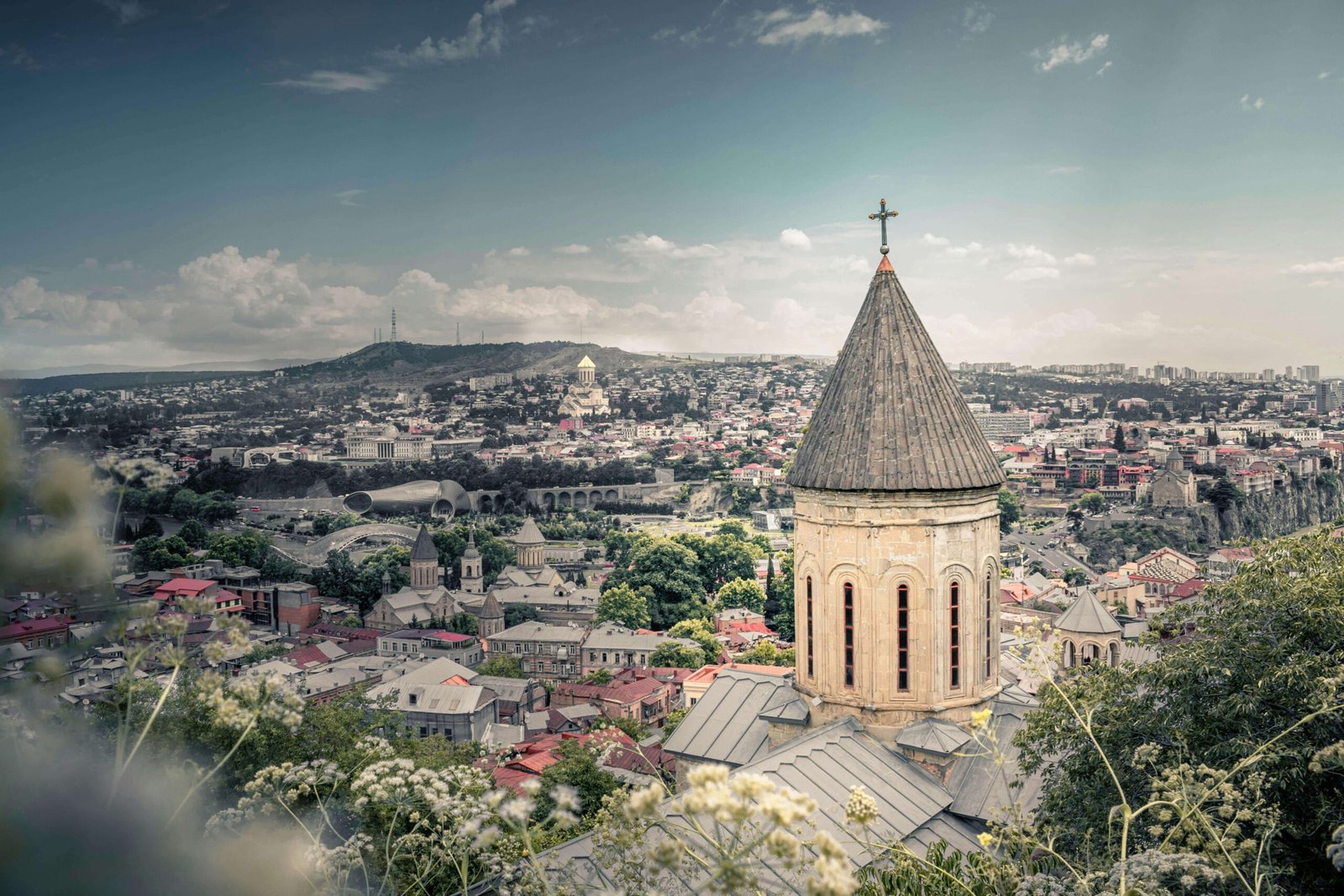
In addition to its fascinating history, Tbilisi also has a vibrant art scene, showcased in the galleries and (often political) street art all around the city, revealing a creative spirit that has thrived despite a tumultuous past.
I also can’t talk about Tbilisi without mentioning the food.
From the distinct and satisfying khachapuri (cheese-filled bread) and khinkali (spiced meat dumplings), to the famous Georgian chacha and amber wine that dates back 8000 years, the gastronomy scene in Tbilisi is world class.
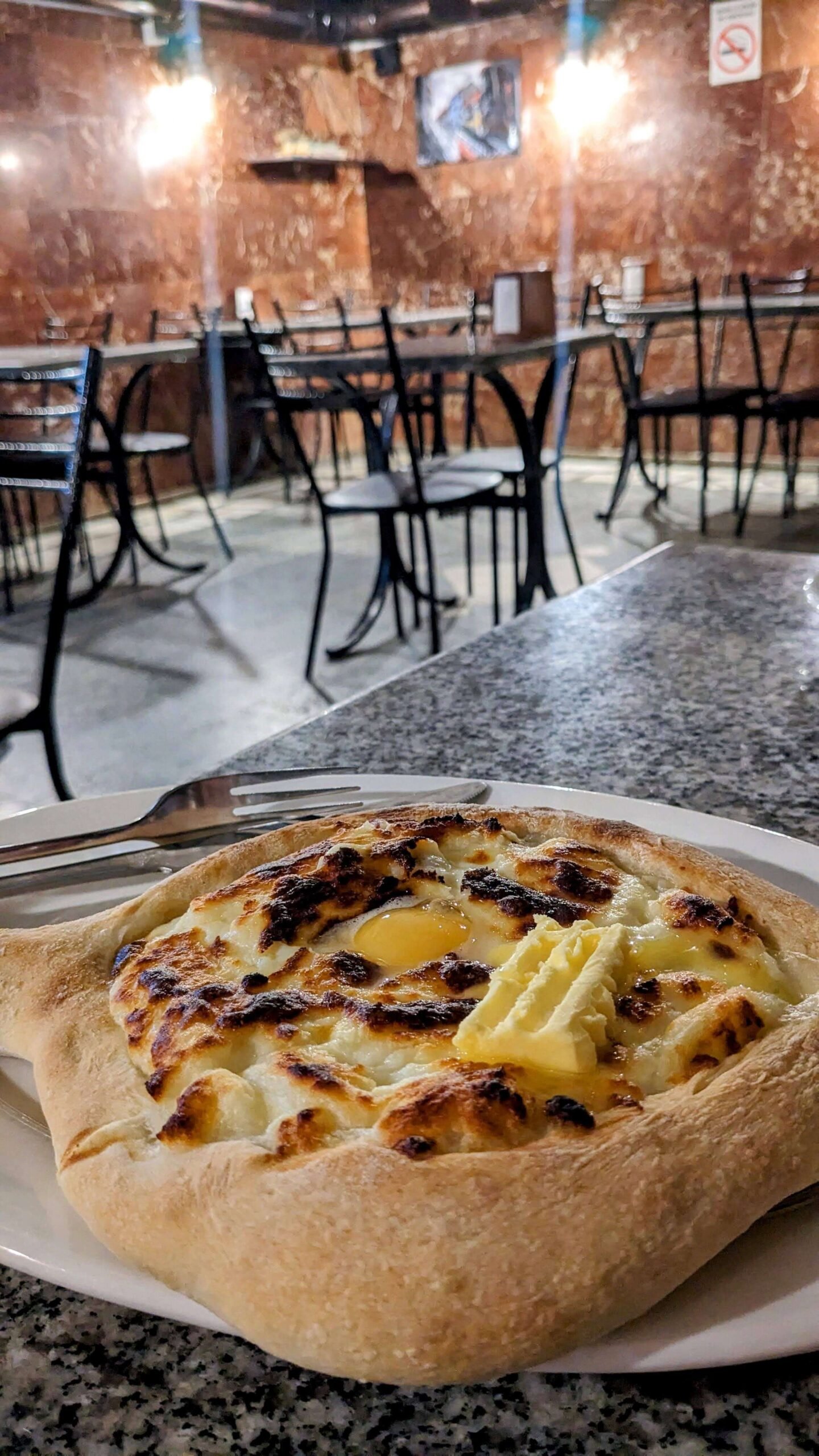
Tbilisi is surrounded by incredible nature, serving as a gateway to the stunning Caucasus mountains, which lie on its doorstep.
Just a few hours’ drive from the capital, you can hike in summer, ski in winter, and explore the ancient towns that occupy this region like nearby Sighnaghi, known as the ‘City of Love.’
Tbilisi travel tips
- Getting around: Navigating Tbilisi is simple with an efficient public transportation system that includes metros, buses, and minibuses (marshrutkas). When I visited Tbilisi, I often used the Bolt taxi app for cheap rides around the city. For a more scenic route, the cable car from Rike Park to Narikala Fortress provides stunning city views.
- Cultural etiquette: Georgians might seem a bit gruff initially but they are known for their warm hospitality. Georgians are not the biggest fans of Russia, so you might not want to talk about politics if you are pro-Russia.
- Language: While Georgian is the official language, many locals, especially the younger generation, speak English, with older Georgians speaking Russian. Learning a few basic Georgian phrases can enhance your experience and endear you to the locals.
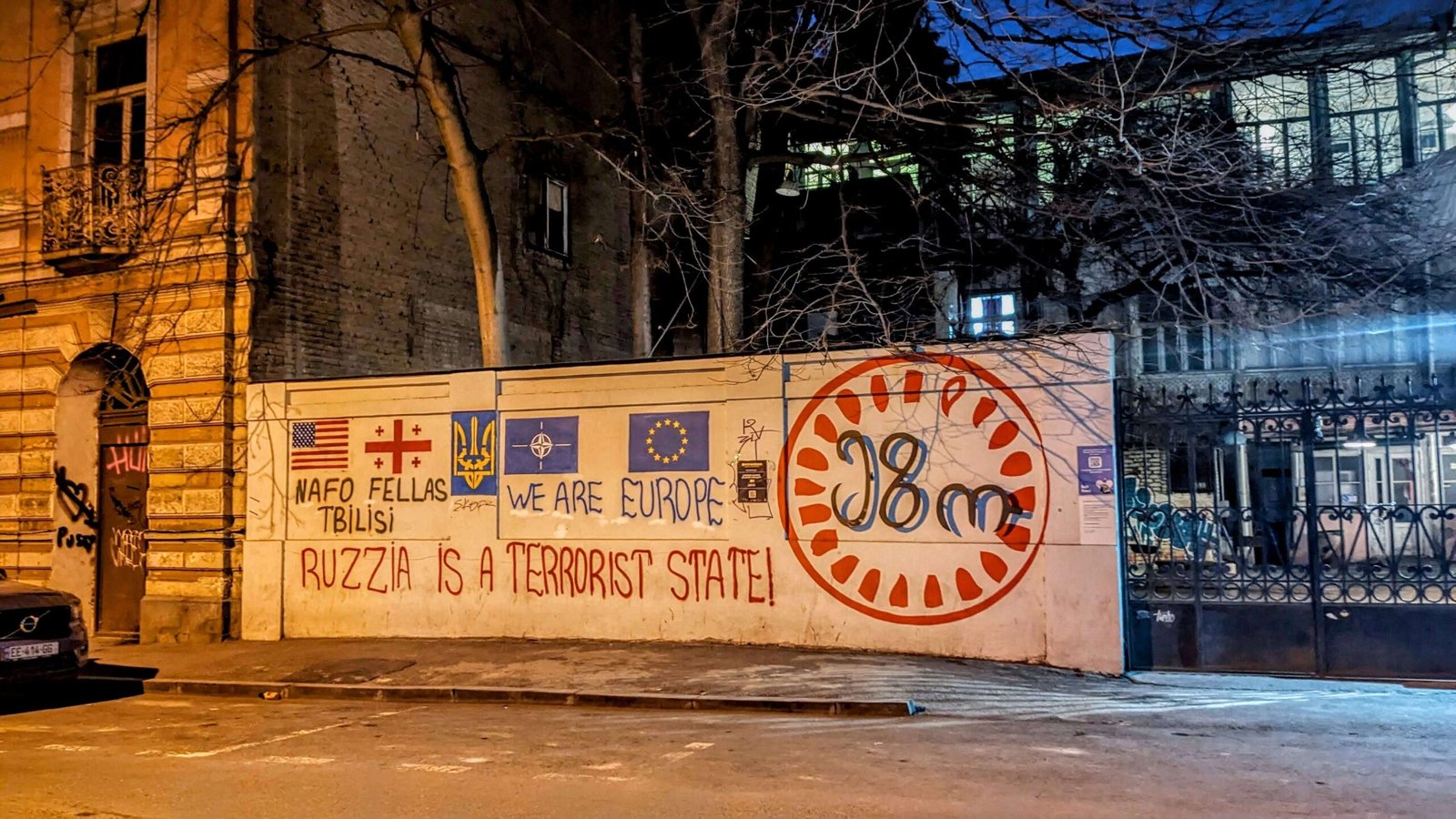
2. Valletta, Malta
Valletta, the sun-drenched capital of Malta, is a fortress city with an incredible past. This UNESCO World Heritage Site is recognised and protected for its well-preserved historic buildings and fortifications.
Built by the Knights of St. John, Valletta is a living museum, and its grid-like streets boast some of Europe’s finest art works, baroque architecture, and palatial buildings such as the Grandmaster’s Palace and St. John’s Co-Cathedral, the latter being home to Caravaggio’s masterpiece, ‘The Beheading of Saint John the Baptist.’
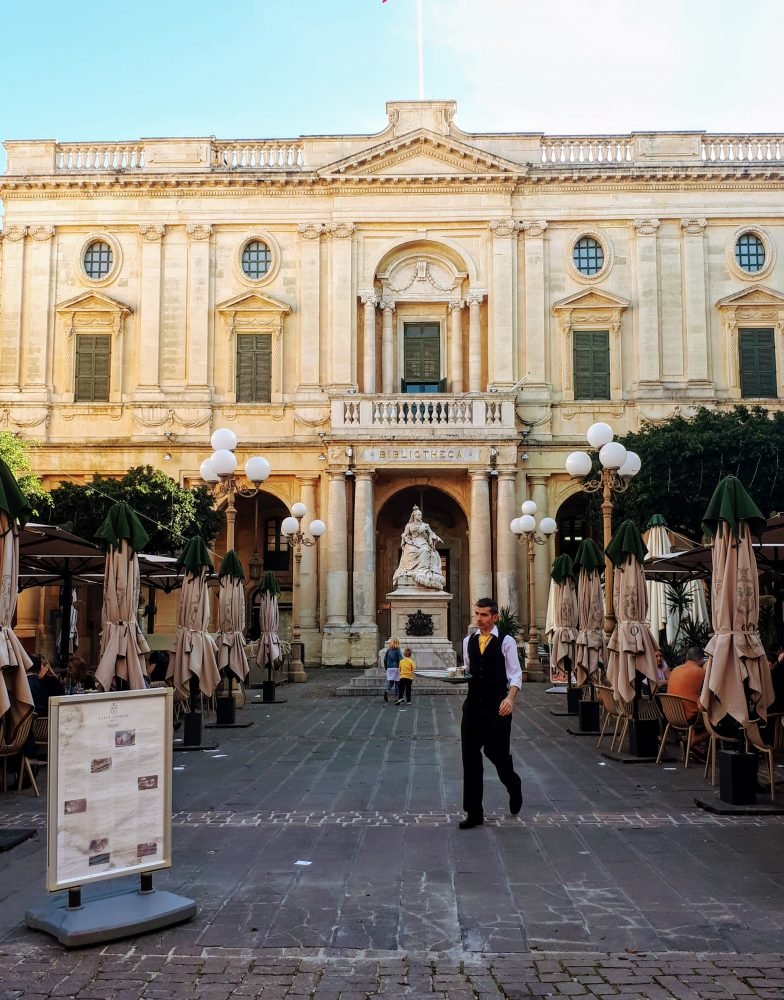
Despite its compact size, Valletta is packed with things to see and do. The Upper Barrakka Gardens provide an awesome view over the Grand Harbour, one of the most spectacular ports in the Mediterranean.
In the evenings, the streets come alive with cafes and bars where visitors can sample unique Maltese cuisine, which reflects its Italian, North African, and English influences.
The city’s cultural calendar is busy with events, from the Valletta Film Festival to the Malta Jazz Festival, ensuring that the arts are a vibrant part of daily life.
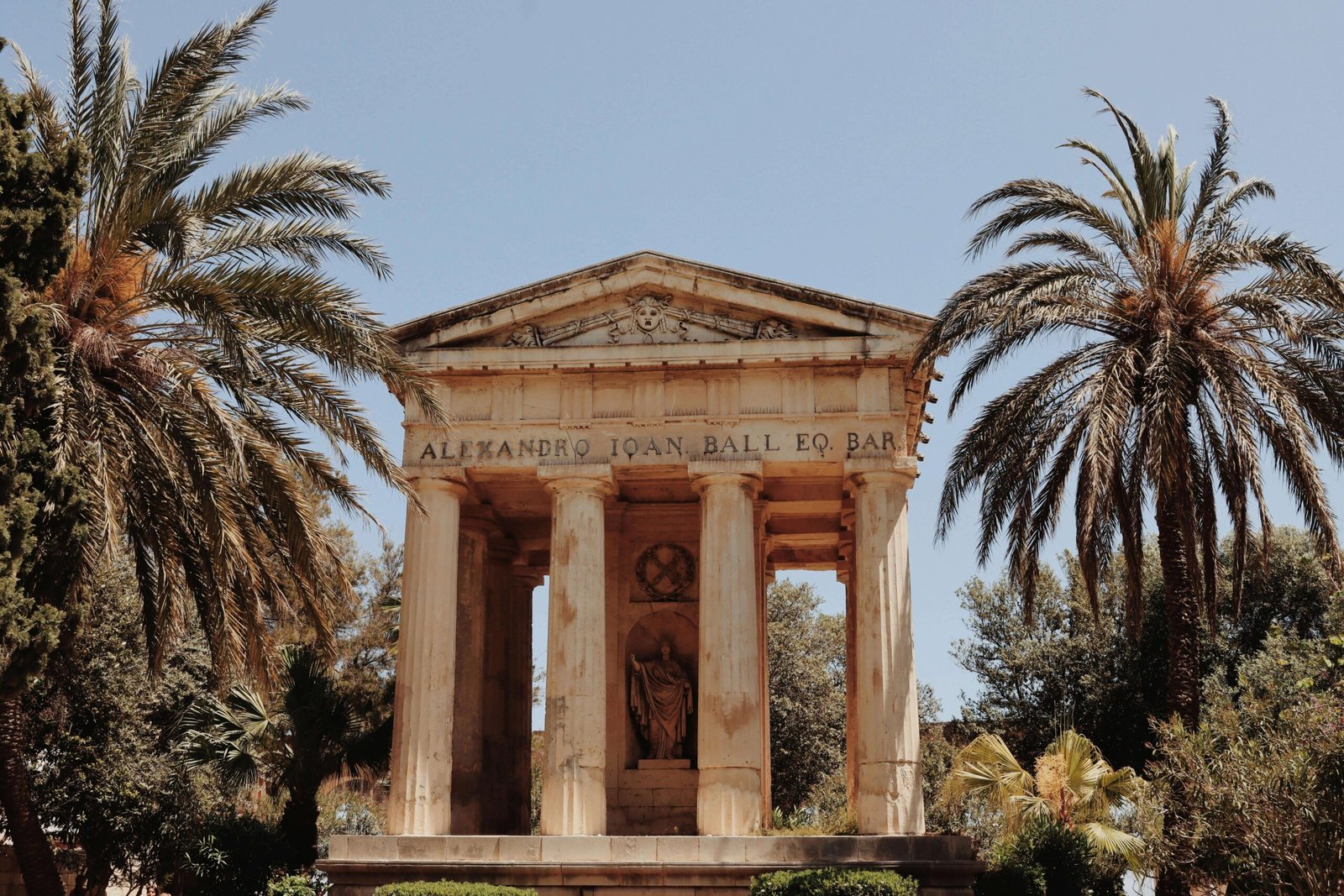
Valletta travel tips
- Getting around: Valletta’s compact size mean that it’s best explored on foot. Public buses offer convenient routes to other parts of Malta.
- Cultural etiquette: Malta has a relaxed Mediterranean lifestyle. Evenings start late here, usually around 8 or 9pm.
- Language: Maltese and English are both official languages. English is widely spoken, making communication easy for tourists.
- Further reading: If you have a few days to spend in Malta, you may enjoy my Malta itinerary.
3. Ljubljana, Slovenia
Ljubljana, the beloved capital of Slovenia, is a small and green city that has won many awards for its environmental friendliness and quality of life.
At its heart is the Ljubljanica River, lined with outdoor cafes and crossed by picturesque bridges, including the famous Dragon Bridge, symbolising the city’s history and myth.
The medieval Ljubljana Castle sits atop a hill, offering views over the city all the way to the Julien alps.
Inside the castle, you can peek into the region’s history.
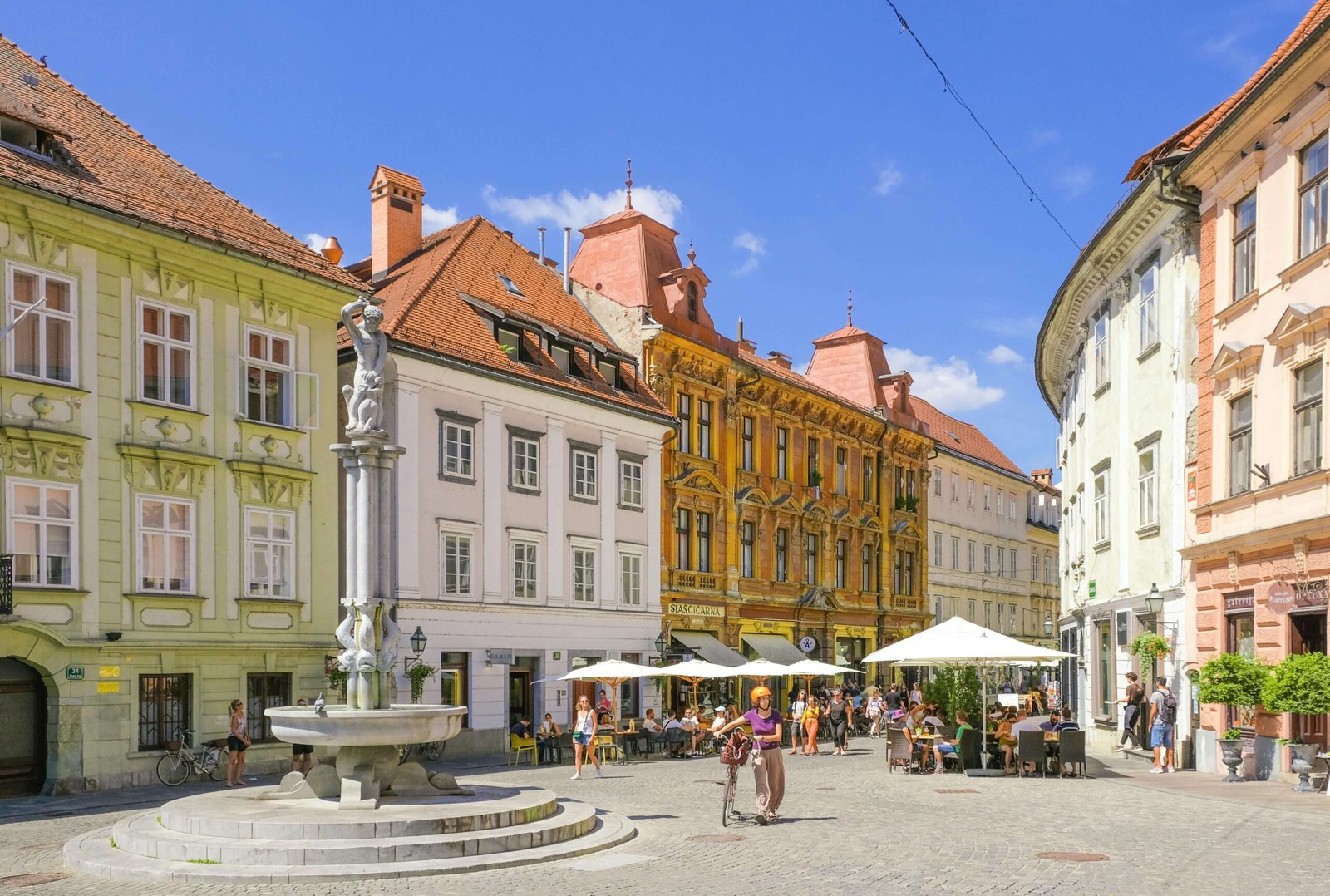
For a small city, Ljubljana has a vibrant cultural scene, with festivals, street food markets, and galleries around every corner.
Its compact size makes it perfect for exploration by foot or bicycle, with the car-free city centre allowing visitors to wander the old town streets with ease.
Tivoli Park provides a lush escape from the urban environment, showcasing outdoor exhibitions and paths that stretch into the surrounding forested areas.
After hours, chic modern eateries, wine bars, and the eclectic Metalkova all provide late night entertainment.
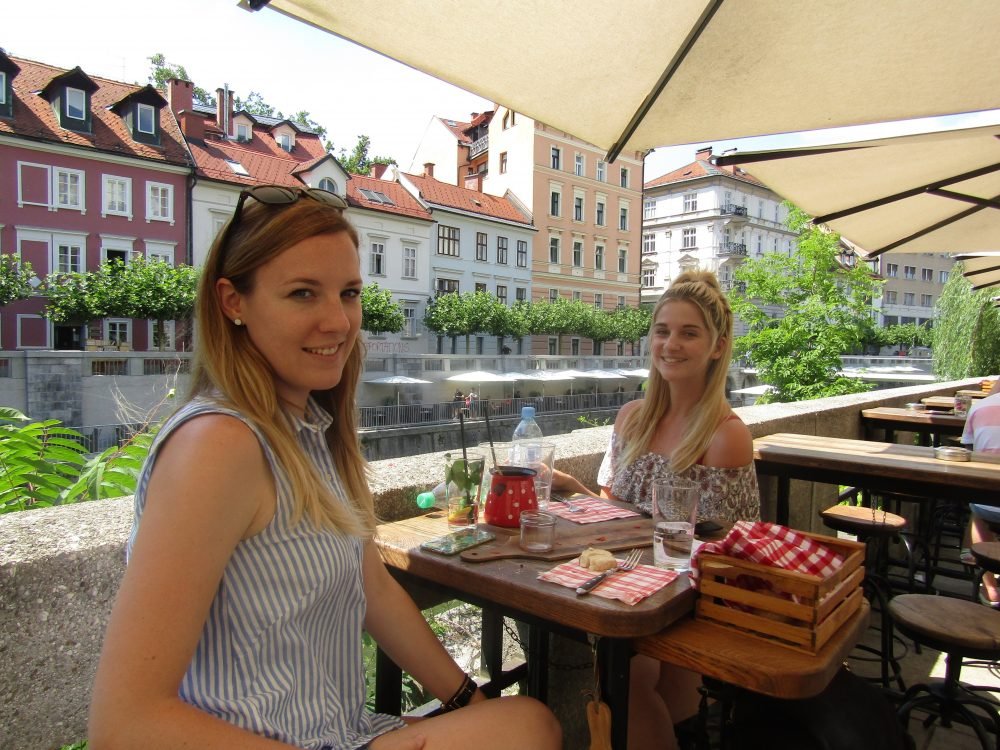
Ljubljana also serves as a jumping-off point to explore to the rest of Slovenia, including the stunning Lake Bled and the Julian Alps, making it an excellent base for both city and nature enthusiasts.
The city also represents Slovenia’s diverse culinary landscape, which combines the influences of neighbouring Italy, Austria, Hungary, and the Balkans, and offers everything from high-end dining to street food.
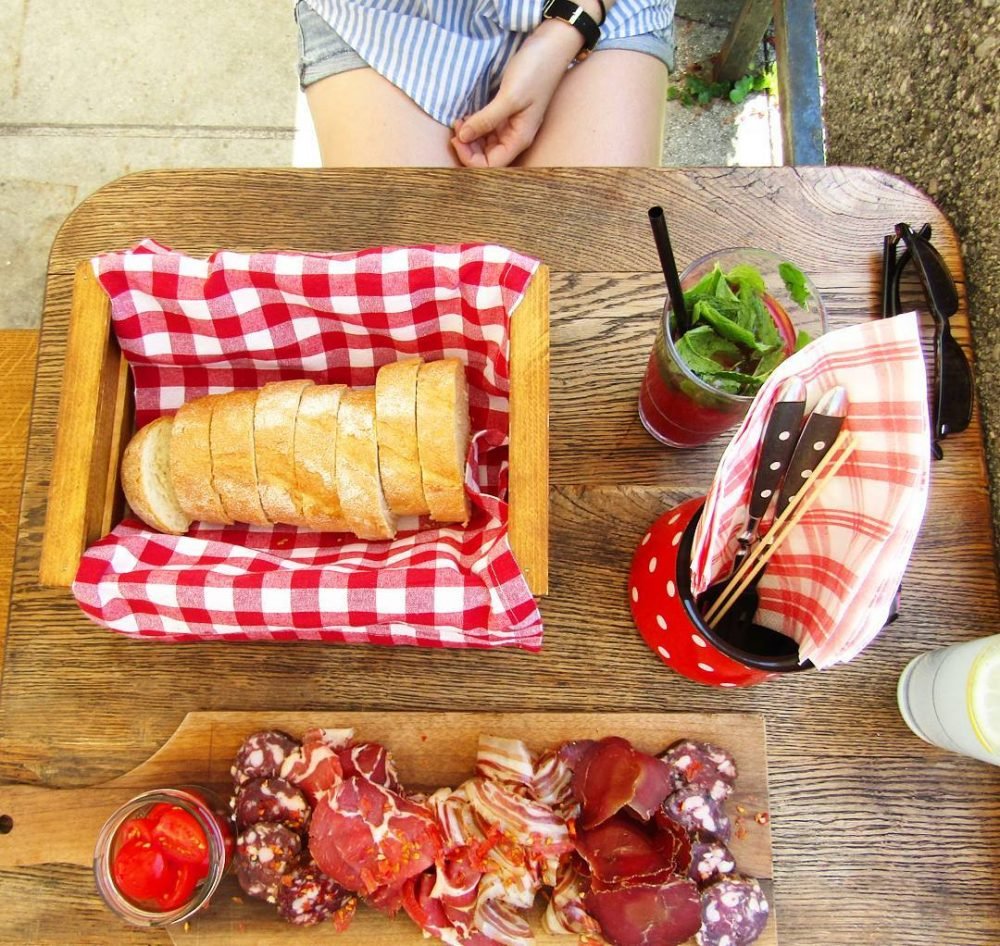
Ljubljana travel tips
- Getting around: Ljubljana is very walkable, and its efficient public bike rental system, BicikeLJ, is a great way to explore the city.
- Cultural etiquette: Slovenians, like their Austrian neighbours value punctuality, so it’s good to be timely. Slovenians seem more ‘European’ than their Balkan neighbours.
- Language: Slovenian is the official language, but English is widely spoken, especially among the younger population.
- Further reading: If Slovenia sounds like somewhere you’d like to visit, you may enjoy my Slovenia itinerary.
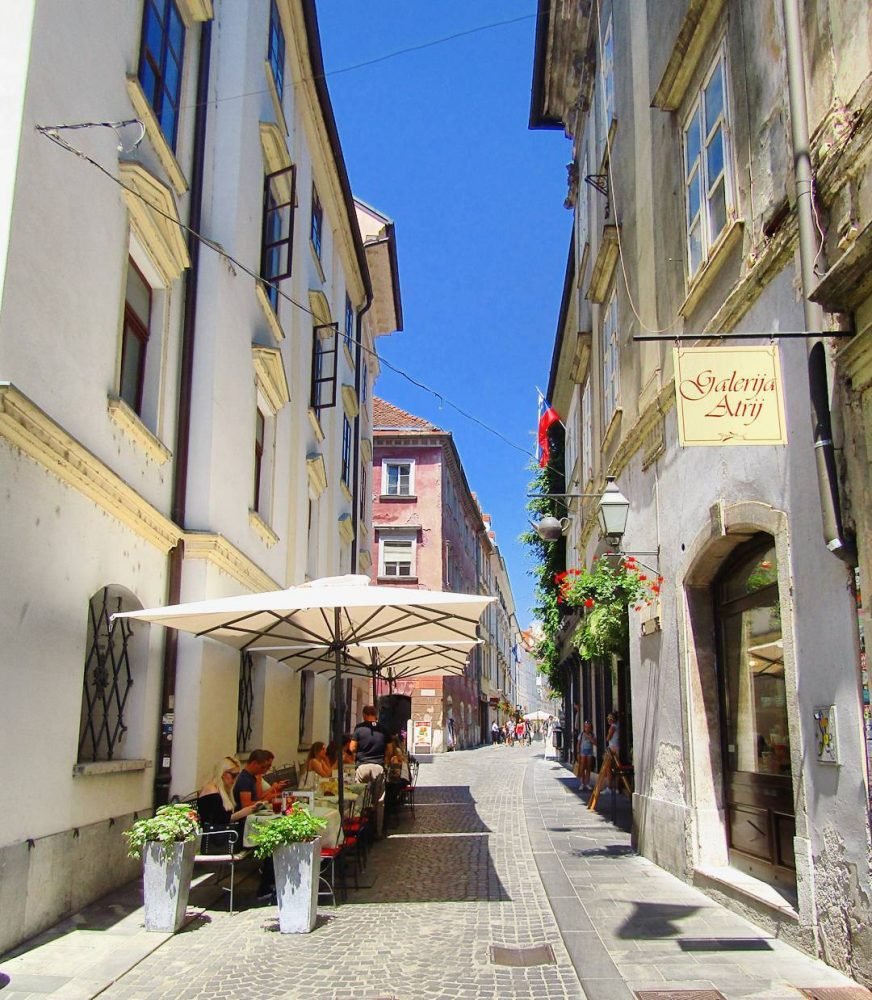
4. Riga, Latvia
Riga, capital of Latvia, is a cultural and architectural treasure trove and is renowned for its extensive collection of Art Nouveau buildings.
The city’s historical centre, another UNESCO World Heritage Site, is a maze of cobblestone streets flanked by ornate facades, with the Freedom Monument and the House of the Blackheads being prominent landmarks in the city.
Riga’s history is complex, with German, Swedish, Russian, and native Livonian influences, each leaving a distinct mark on the city’s history, culture and architecture.
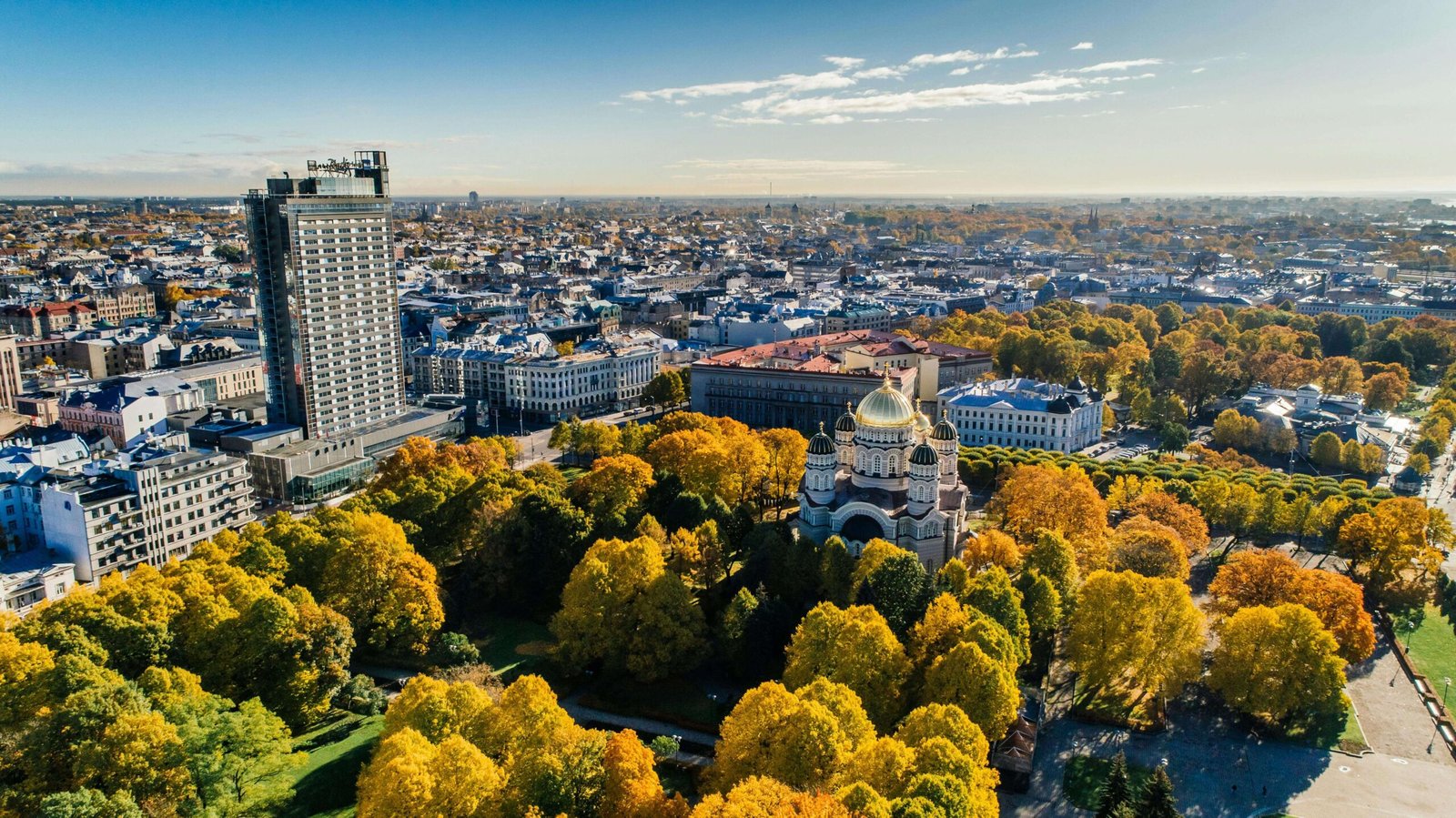
The Riga Central Market, one of Europe’s largest and busiest, offers a sensory feast of Latvian produce, meats, and crafts, perfect for experiencing the local lifestyle. The city is also a gateway to Latvia’s natural beauty, with the Baltic Sea coast and the Gauja National Park within easy reach.
Riga’s cultural scene is also worth a mention, with numerous museums, galleries, and theatres showcasing the artistic heritage of the Baltic region. The Latvian National Opera and Ballet is a particular point of pride, offering world-class performances.
Foodies will find Riga especially interesting, with its blend of traditional Latvian fare, such as rye bread, smoked fish, and hearty stews, and a growing contemporary scene.
Riga travel tips
- Getting around: Public transportation in Riga is well-organised, with trams, buses, and trolleybuses covering the city extensively.
- Cultural etiquette: Latvians are generally reserved and value personal space. A polite and somewhat formal demeanour is appreciated in social interactions.
- Language: Latvian is the official language, but Russian is also widely spoken. English is commonly used in tourist areas and by younger people.
- Further reading: Although I personally have never been to Riga, my friend and fellow travel blogger Lora has, and she wrote a lovely article about Riga for me, which you might find interesting.
5. Ghent, Belgium
Sometimes overlooked in favour of its more famous neighbours Bruges and Brussels, Ghent is a Belgian city that has a contemporary vibe whilst also holding onto its medieval charm.
The city’s historic centre is a network of canals lined with impressive architecture, from the towering belfry to the imposing Gravensteen Castle, a fortress dating back to the Middle Ages.
Ghent’s car-free city centre, one of the largest in Belgium, is ideal for exploration on foot or by bike.
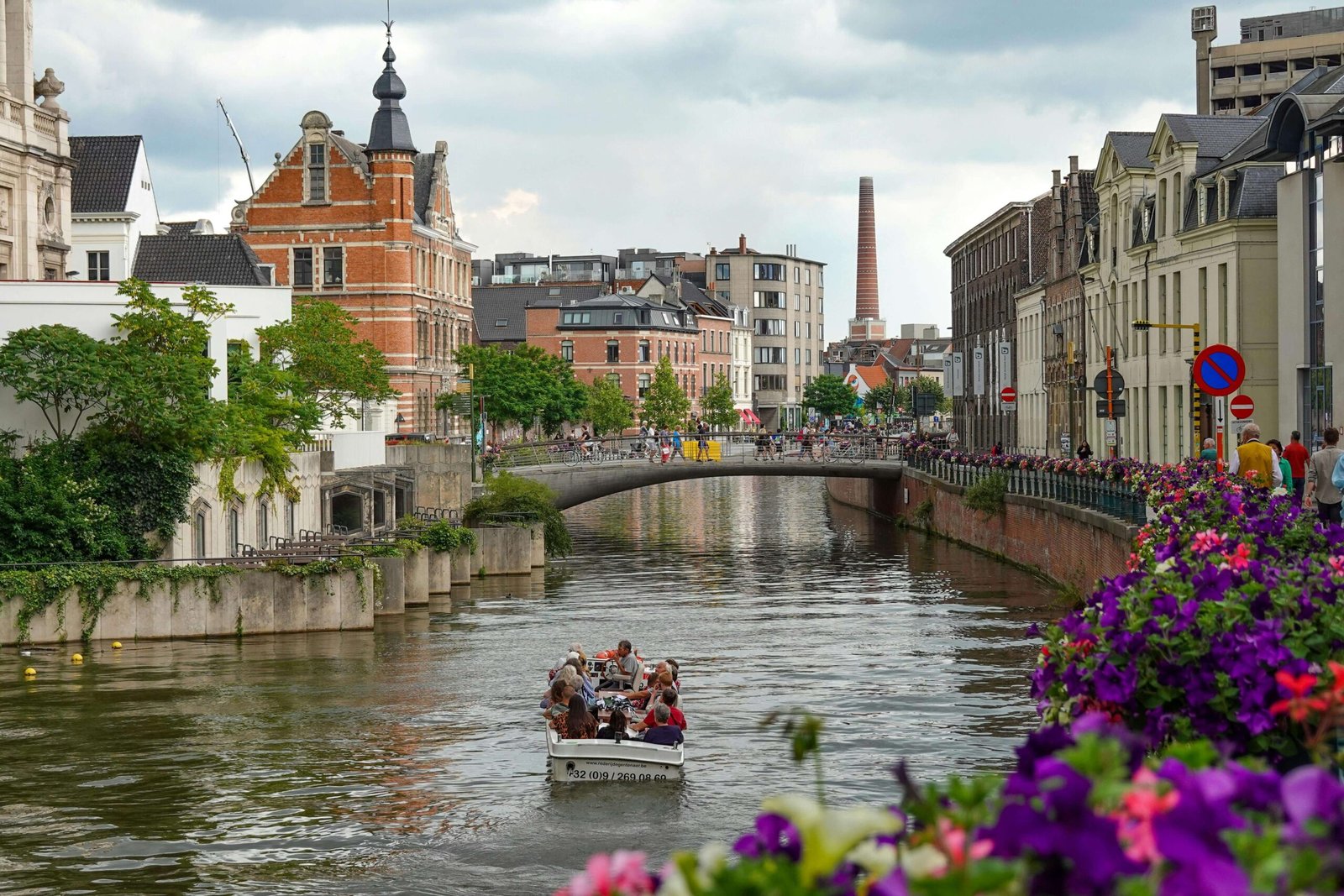
In terms of things to do, culture vultures will find plenty to admire in the Fine Arts Museum and the contemporary SMAK, while the Design Museum Ghent showcases both historic and modern pieces.
Ghent’s culinary scene is a delight, with a focus on locally sourced ingredients and a surprising array of vegetarian options that reflect of the city’s progressive ethos.
The best time to visit Ghent is during the Ghent Festivities in July, an annual festival that transforms the streets into a lively cultural bonanza with music, theatre, and food stalls.
Ghent travel tips
- Getting around: Ghent’s compact centre is best explored on foot or by bicycle. Trams and buses are also available for longer distances within the city.
- Cultural etiquette: Belgians are known for their politeness and punctuality. Casual conversation and a respectful approach in interactions are appreciated.
- Language: Dutch is the official language, but English is widely spoken, especially in tourist areas and by younger generations.
6. Bologna, Italy
Bologna, capital of the Emilia-Romagna region, is often hailed as Italy’s culinary capital, a city where food is a serious affair and life revolves around hearty but unpretentious meals and vibrant markets selling quality locally sourced produce.
The city is characterised by its terracotta-roofed buildings and the ancient towers of Asinelli and Garisenda, which offer breathtaking views over Bologna and its surrounding hills.
The heart of Bologna is its Piazza Maggiore, surrounded by significant buildings like the Basilica di San Petronio and the Palazzo d’Accursio.
The university, founded in 1088, is the oldest in the world, and the porticos covering the pavements provide sheltered walkways that are perfect for exploring the city’s hidden corners and historical treasures.
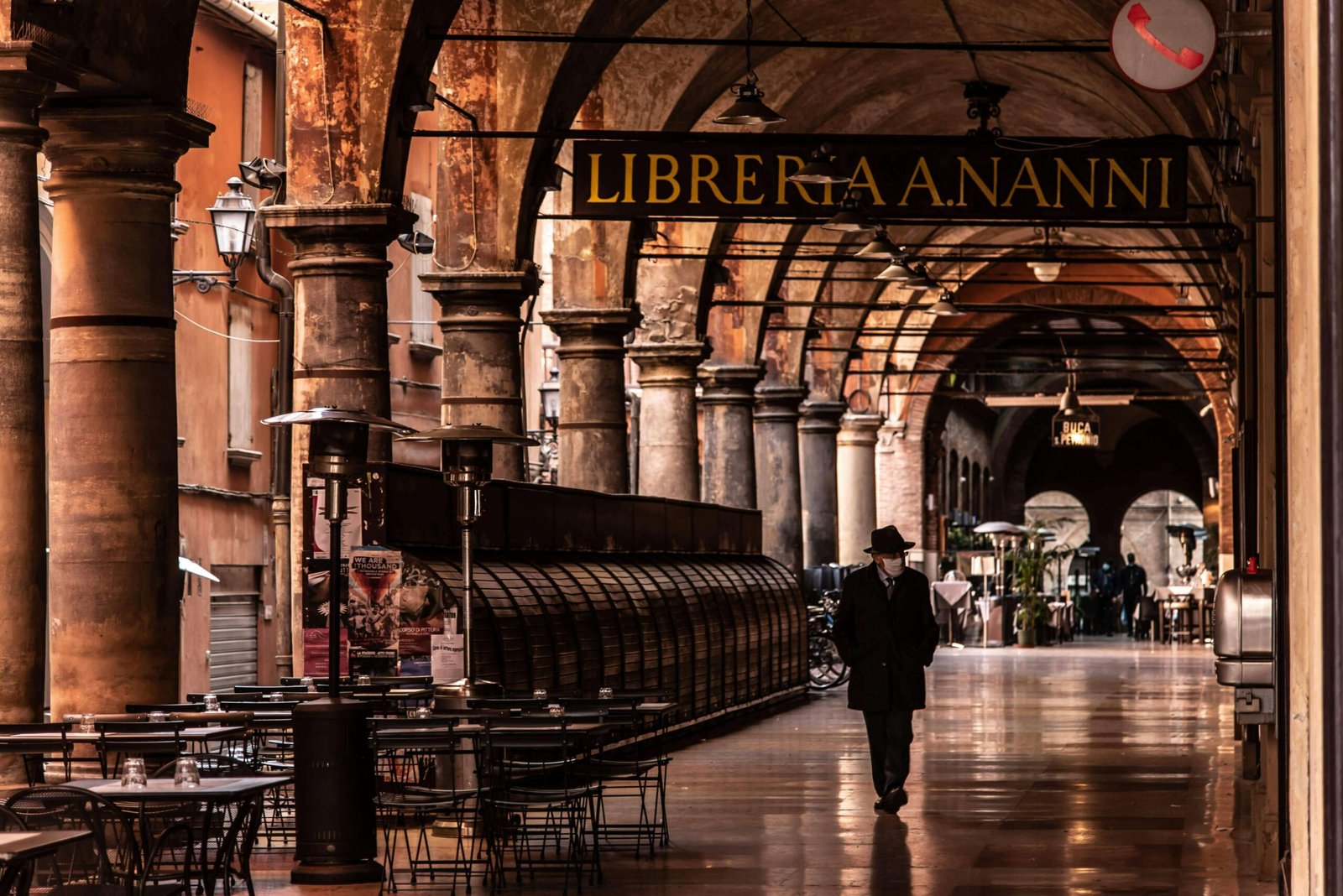
Bologna’s culinary tradition is rich and the locals take enormous pride and care when it comes to their food.
Local specialties include tagliatelle al ragù (better known as Bolognese sauce), mortadella, and tortellini in brodo (tortellini in broth).
The food markets, especially the historic Mercato di Mezzo, are an absolute foodie paradise, where visitors can sample cheeses, cured meats, and other local delicacies.
Bologna travel tips
- Getting around: Bologna is well-connected by train to major Italian cities and can be comfortably explored on foot or by using its efficient public transportation system.
- Cultural etiquette: Bolognese people are proud of their culinary heritage. When dining out, showing appreciation for the food is a way to respect local culture.
- Language: Italian is the main language, but many locals in the tourism and hospitality industry speak English.
7. Lyon, France
In a country renowned for food, it takes a lot to get designated the gastronomic capital!
However, that is what Lyon is to France.
Lyon is one of those beautiful European cities with a food pedigree stretching back through the ages, with typical bouchons (traditional restaurants) serving up hearty Lyonnaise cuisine, including specialties like quenelles, coq au vin, and praline tarts.
The Les Halles de Lyon Paul Bocuse, a gourmet food market named after the renowned chef, is a must-visit, showcasing the finest regional produce and delicacies.
Lyon’s cultural offerings extend far beyond food, with world-class museums like the Musée des Beaux-Arts housing masterpieces by artists such as Picasso and Rembrandt.
The city also hosts the annual Festival of Lights (Fête des Lumières), a dazzling spectacle where buildings are illuminated in artistic displays, attracting millions of visitors each year.
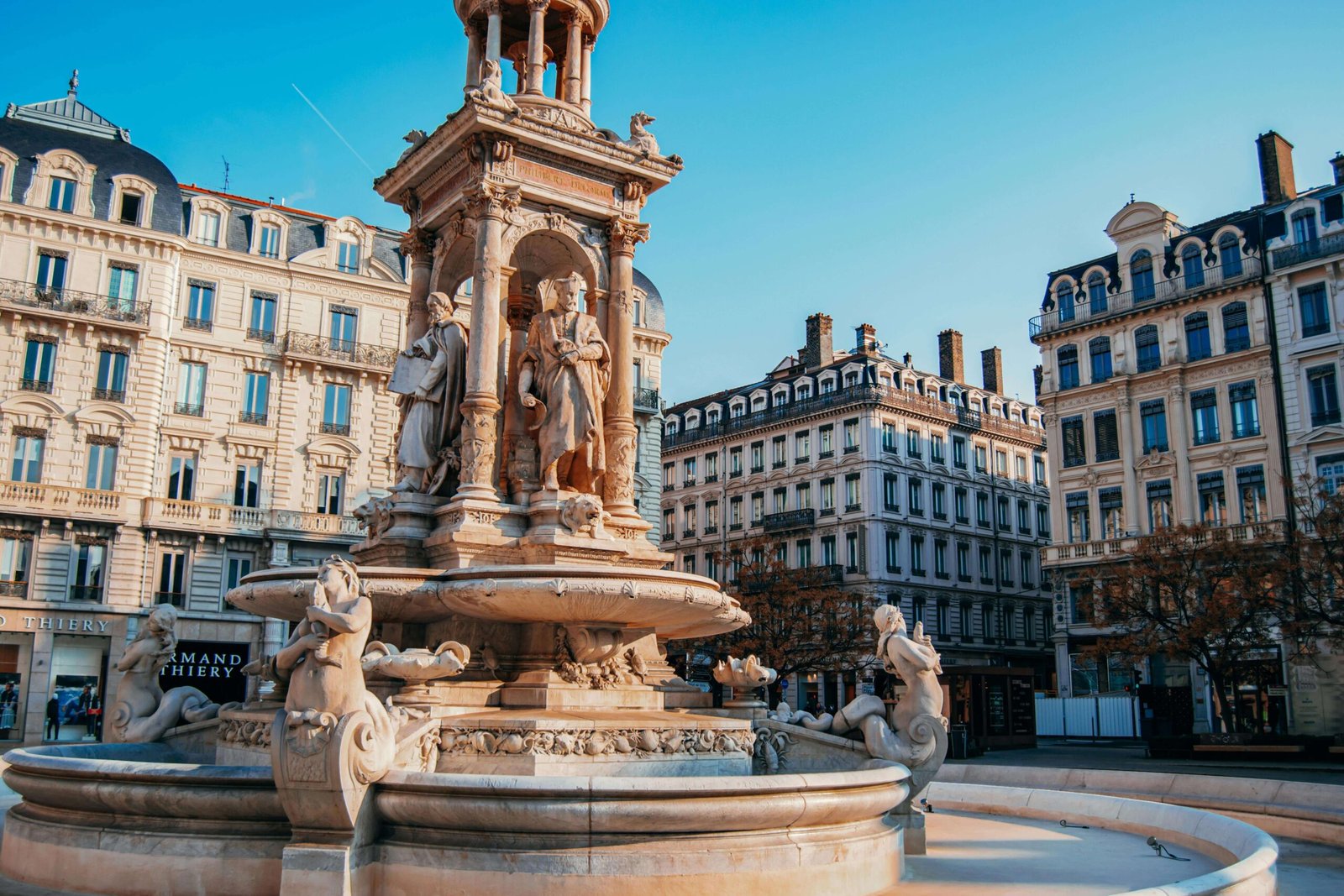
Lyon’s charming Old Town (Vieux Lyon) is characterised by narrow cobblestone streets, Renaissance architecture, and traboules (hidden passageways) that recall the city’s silk-weaving past.
Roman ruins can still be found in the middle of the city, and the Basilica of Notre-Dame de Fourvière, perched atop Fourvière Hill, is one of the best places to look out over the city and is a testament to Lyon’s strong Catholic heritage.
Lyon travel tips
- Getting around: Lyon has an extensive public transportation network, including buses, trams, and a metro system, making it easy to navigate the city.
- Cultural etiquette: Men pour wine for the women at the table, and you shouldn’r start eating before the host says ‘bon appétit.’
- Language: French is the official language, but many locals, especially in tourist areas, speak English.
8. Coimbra, Portugal
Coimbra, upon the Mondego River, is a historic city renowned for its prestigious university, energetic cultural scene, and modern city vibe set amongst its medieval old town.
The University of Coimbra, one of the oldest in Europe, defines the cityscape with its striking buildings, including the Joanina Library, complete with exquisite Baroque architecture and a collection of rare manuscripts.
The city’s historic centre, which is a UNESCO World Heritage Site, is a labyrinth of narrow streets, charming squares, and ancient churches. The Se Velha (Old Cathedral) and the Monastery of Santa Clara-a-Velha are must-visit landmarks that provide insights into Portugal’s religious history.
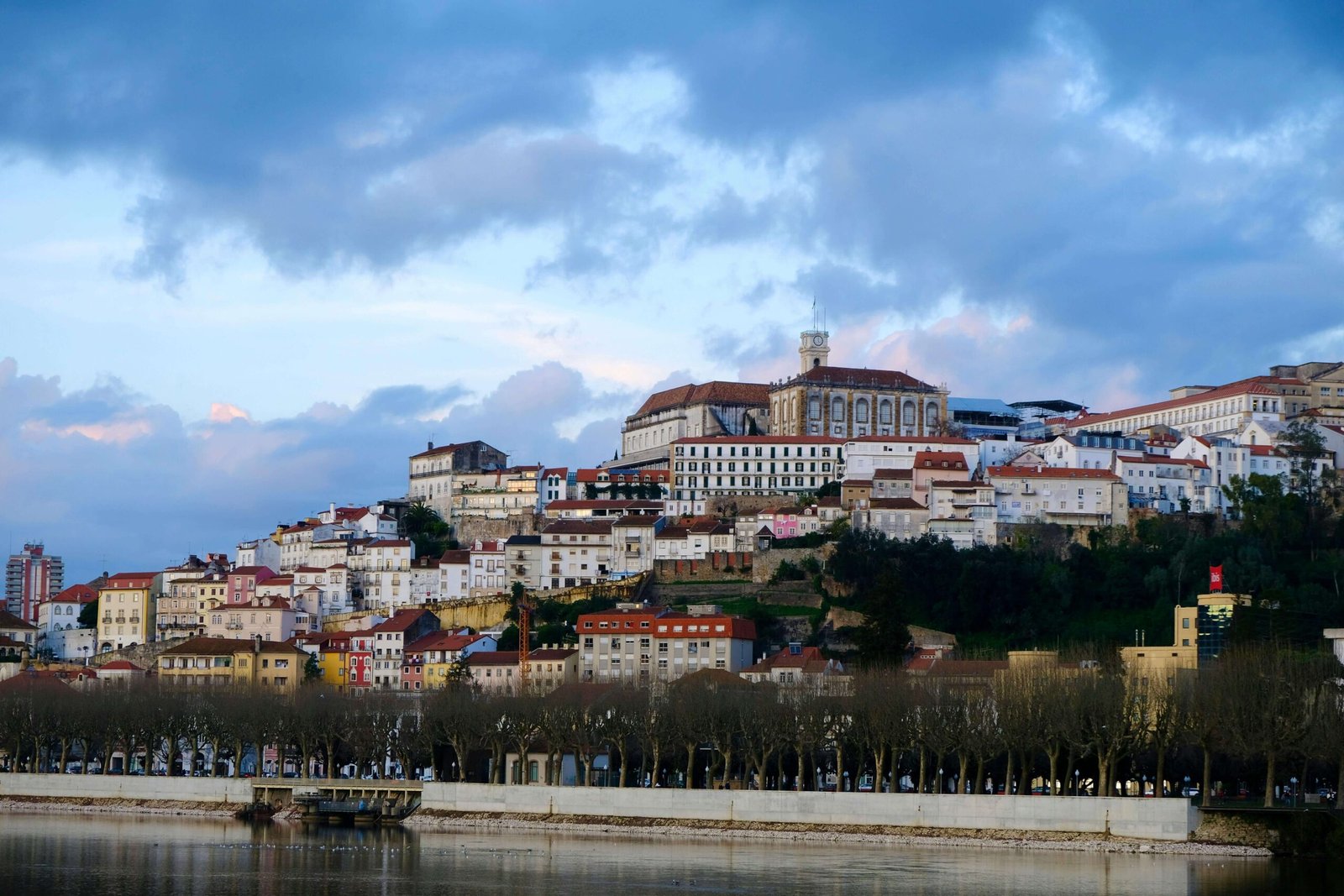
Coimbra is not just a city of the past; today, it is a hotspot of contemporary culture, with a thriving music scene, renowned for its Fado performances that fill the streets and taverns. If you happen to visit Portugal during the holiday season, Coimbra is home to some of Portugal’s best Christmas markets.
The Botanical Garden of the University of Coimbra offers a serene respite from busy city life, while the riverfront area is perfect for a stroll along the Mondego.
Coimbra travel tips
- Getting around: Coimbra is easily navigated on foot, especially in the historic centre. Public buses and taxis are also available for longer distances.
- Cultural etiquette: Portuguese culture isn’t so worried about punctuality, so don’t panic if your date is a little late!
- Language: Portuguese is the official language, but many locals in tourist areas speak English.
9. Graz, Austria
Graz, capital of the Styria region, is a fascinating city with a breathtaking backdrop of hills and vineyards.
The city’s historic centre (yet another UNESCO World Heritage Site!), is a treasure trove of architectural marvels, from the Renaissance-era Landhaus to the iconic Uhrturm (Clock Tower) on Schlossberg Hill, which offers spectacular views over the city.
Graz is home to many museums, galleries, and theatres, including the Kunsthaus Graz, an avant-garde art museum known for its futuristic architecture.
The food in Graz is another pleasant surprise, with local cuisine revealing why Styria is known as the belly of Austria. Enjoy a meal at a local restaurant accompanied by wines from the nearby vineyards – you won’t be disappointed!
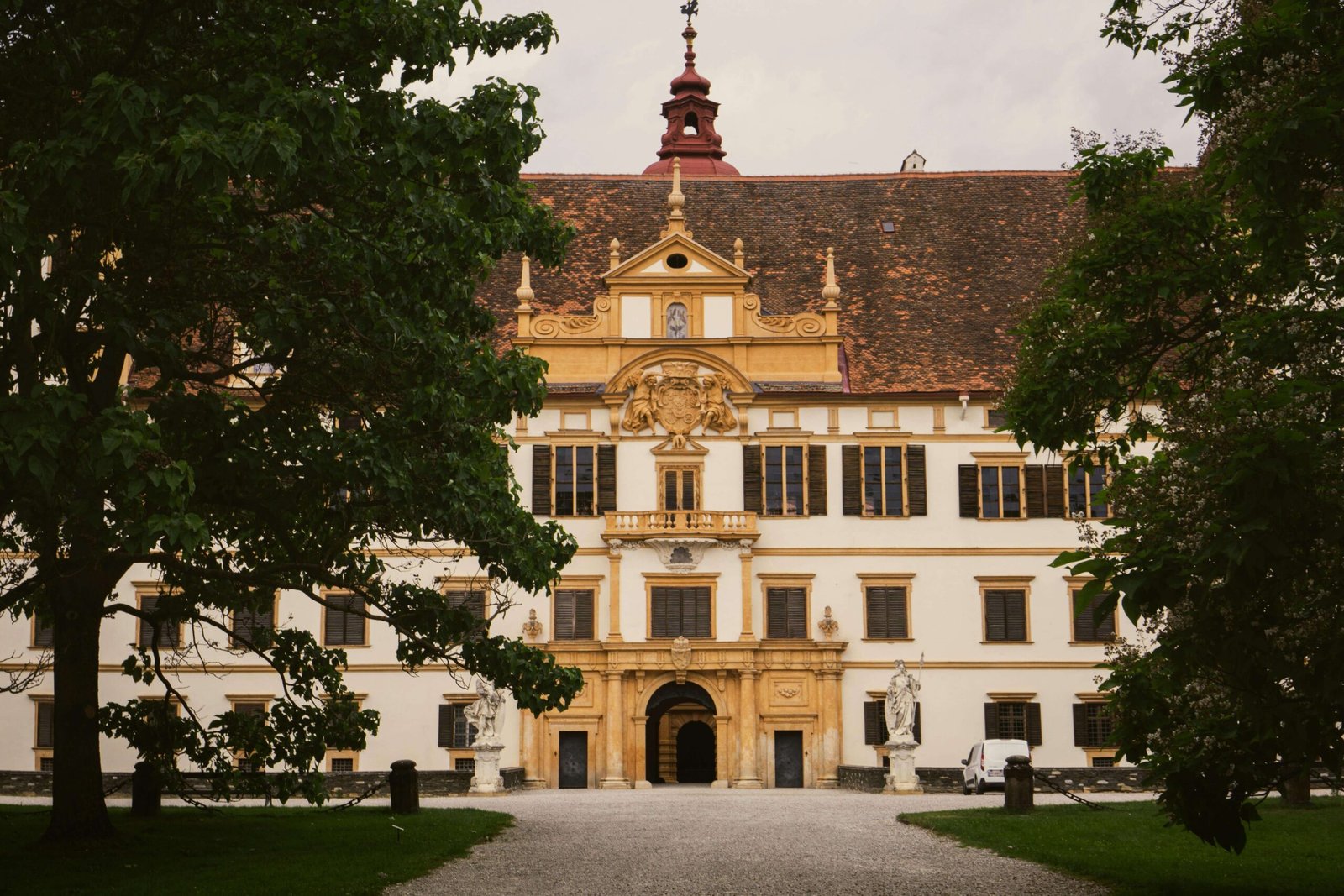
The Murinsel, an extravagant man-made island floating in the middle of the Mur River, is a modern architectural marvel and a popular spot for locals and visitors alike to relax and enjoy the river views.
Graz’s commitment to sustainability and green spaces is evident in places like the Schloss Eggenberg Gardens and the Stadtpark, offering tranquil escapes within the city limits.
Graz travel tips
- Getting around: Graz has an efficient public transportation system, including trams, buses, and cycling paths. The city centre is easily explored on foot.
- Cultural etiquette: Austrians are polite and often reserved, so it’s best to err on the side of formality.
- Language: German is the official language, but English is widely spoken, especially in tourist areas.
10. Ohrid, North Macedonia
Of all the hidden gems in Europe, Ohrid is among the most special.
Situated on the shores of Lake Ohrid, Ohrid is one of Europe’s oldest human settlements, and its rich history and natural beauty have cemented its status as a UNESCO World Heritage Site.
The city’s ancient roots are evident in its well-preserved churches and monasteries, such as the Church of St. Sophia and the Monastery of Saint Naum, showcasing Byzantine architecture and exquisite frescoes.
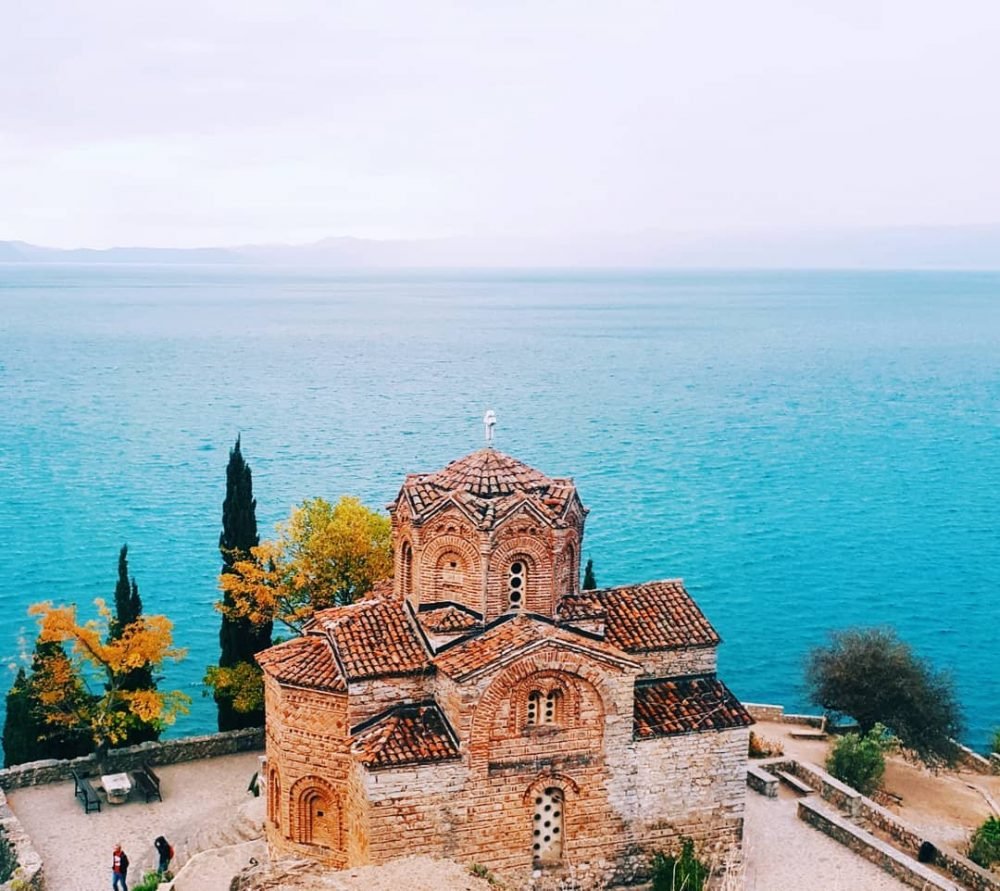
Lake Ohrid, often referred to as the ‘Macedonian Pearl,’ is a pristine body of water surrounded by mountains, offering opportunities for swimming, boating, or just relaxing by the lake.
The quaint Old Town is a maze of cobblestone streets lined with charming cafes, artisan shops, and panoramic viewpoints overlooking the lake and its shimmering waters.
Local cuisine features hearty Balkan classics, including fresh fish from the lake, grilled meats, Macedonian wines, and rakija (fruit brandy).
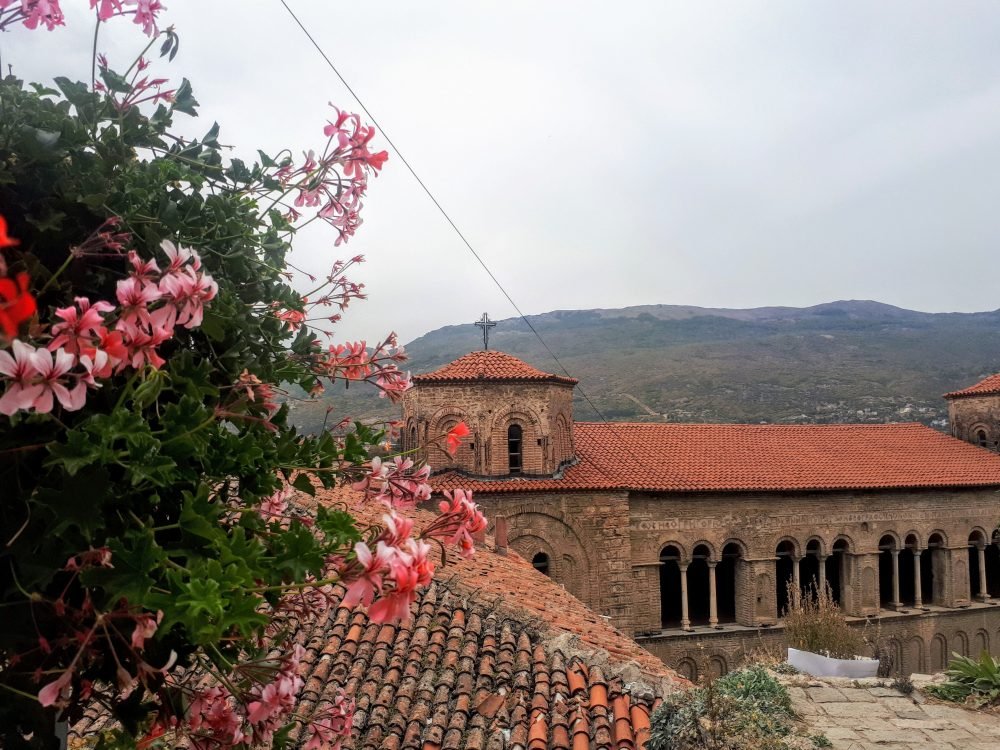
Ohrid travel tips
- Getting around: Ohrid is a walkable city, especially in the Old Town area. Taxis and local buses are available for longer distances.
- Cultural etiquette: It’s considered polite to finish all the food on your plate here and leave it empty. Given how good the food is here, it won’t be difficult!
- Language: Macedonian is the official language, but English is commonly spoken in tourist areas and by younger generations.
- Dogs: Ohrid (and North Macedonia in general) is home to a lot of street dogs. They are all friendly, and have all been vaccinated, but if you’re scared of dogs, you should prepare to see a lot of them in Ohrid!
- Further reading: I have a couple of articles about Ohrid that you might find useful. My list of things to do in Ohrid provides a detailed guide to the city, and my article about visiting Ohrid in the off-season discusses what Ohrid is like in the autumn months.

11. Cluj-Napoca, Romania
Cluj-Napoca, usually referred to simply as Cluj, is a lively university city in the heart of Transylvania.
It’s known for its youthful atmosphere, thriving arts scene, and blend of history and modernity.
Cluj’s historical centre is home to tonnes of gorgeous medieval architecture, such as the Gothic St. Michael’s Church and the Baroque-style Banffy Palace, which houses the National Museum of Art.
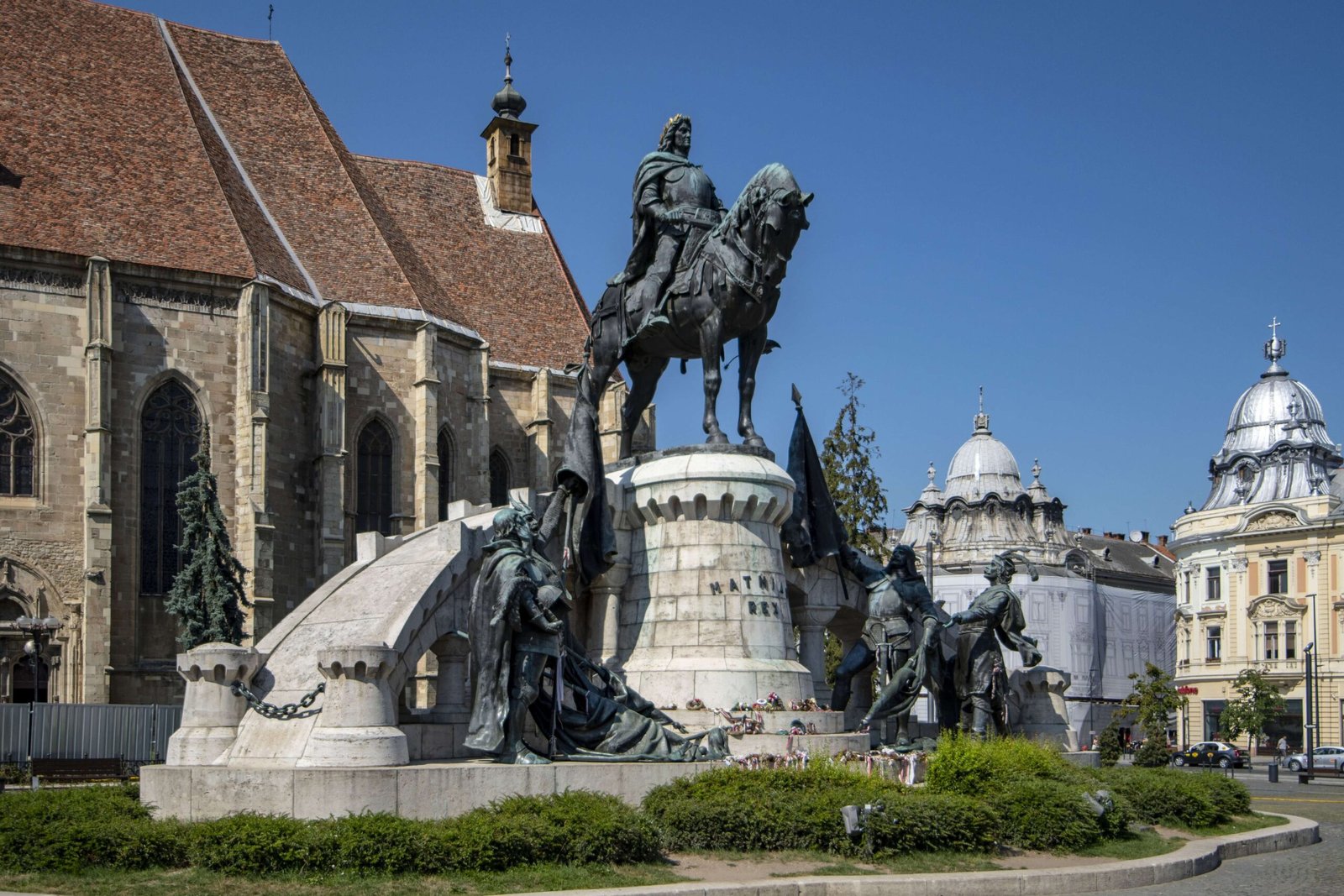
What really sets Cluj apart from other Romanian cities is its academic and technological innovation.
Home to several universities and a burgeoning tech industry, Cluj has been dubbed the ‘Silicon Valley of Transylvania.’
As with many college towns, Cluj has a strong café culture, a thriving nightlife, and a lot of live music venues, where local artists showcase their talents.
The culinary scene is a blend of traditional Romanian dishes, and international cuisine, which adds to the cosmopolitan vibe here.
Cluj-Napoca travel tips
- Getting around: It might be Eastern Europe, but Cluj-Napoca has an incredibly efficient public transportation system, including buses and trams. Taxis and ridesharing services are also available.
- Cultural etiquette: Romanians are known for their direct communication style and honesty. While this can seem abrupt (or even rude!) to people from other cultures, this is rarely the intent.
- Language: Romanian is the official language, but English is widely spoken, especially among the younger population.
12. Jaen, Spain
Contrary to what you might think, it is still possible to get off the beaten track in Spain!
With an abundance of Renaissance architecture, Arab baths, olive groves as far as the eye can see, and a charming historical centre, Jaen is one of those underrated places in Europe that barely receives any tourism.
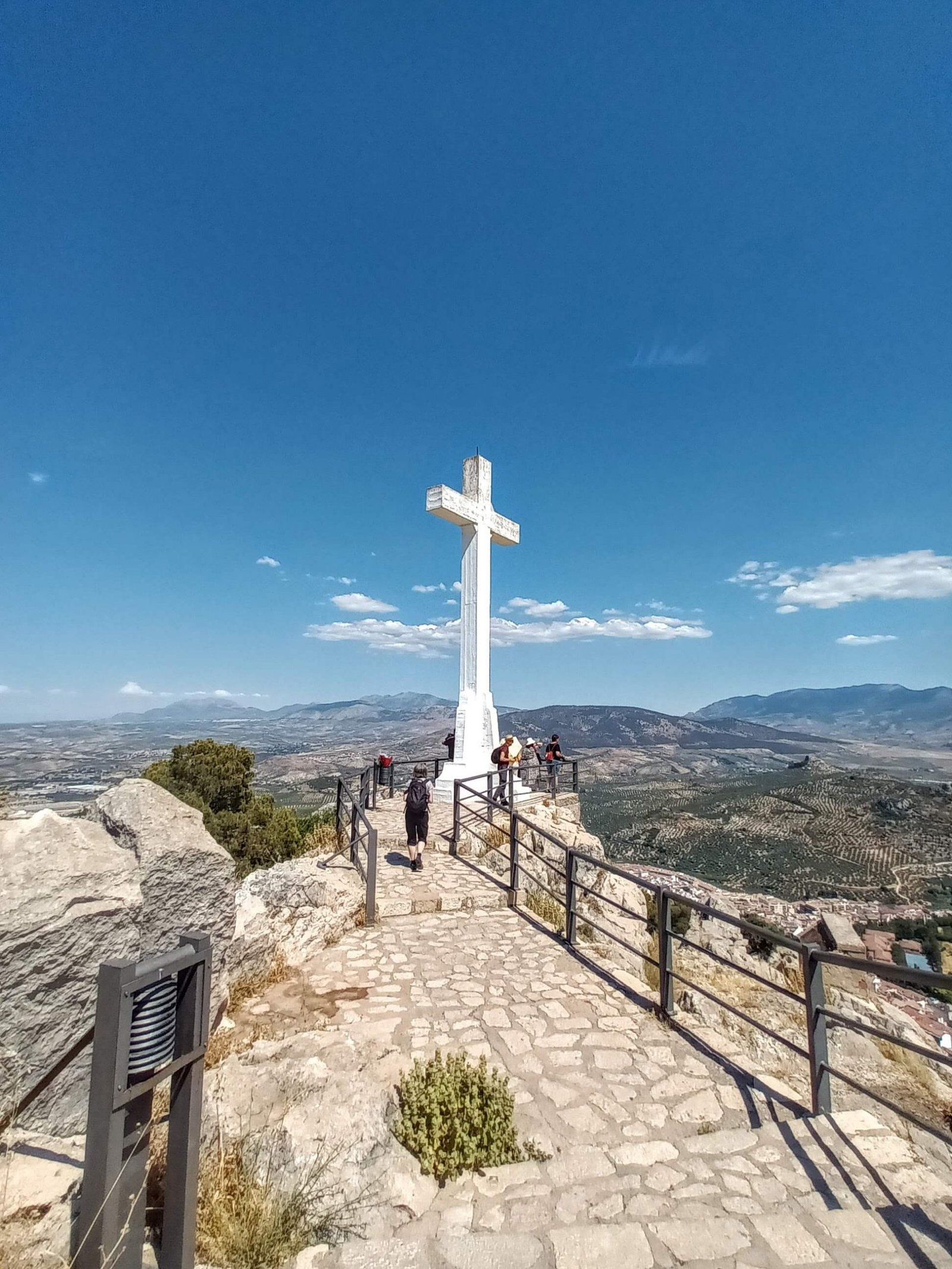
Stroll around the grounds of the Castillo de Santa Catalina and take in the magnificent views over the valley of the Guadalquivir and the Sierra Morena mountain range, before indulging in some high-end Andalucian cuisine at the nearby Parador de Santa Catalina.
In the heart of the Old City, discover the 11th century Moorish baths and admire the beauty of Jaen Cathedral, home to the Holy Veil, an important relic.
What I loved most about Jaen was the complete absence of other tourists; Jaen is a real, working, Spanish city, and you can truly get a slice of local life here.
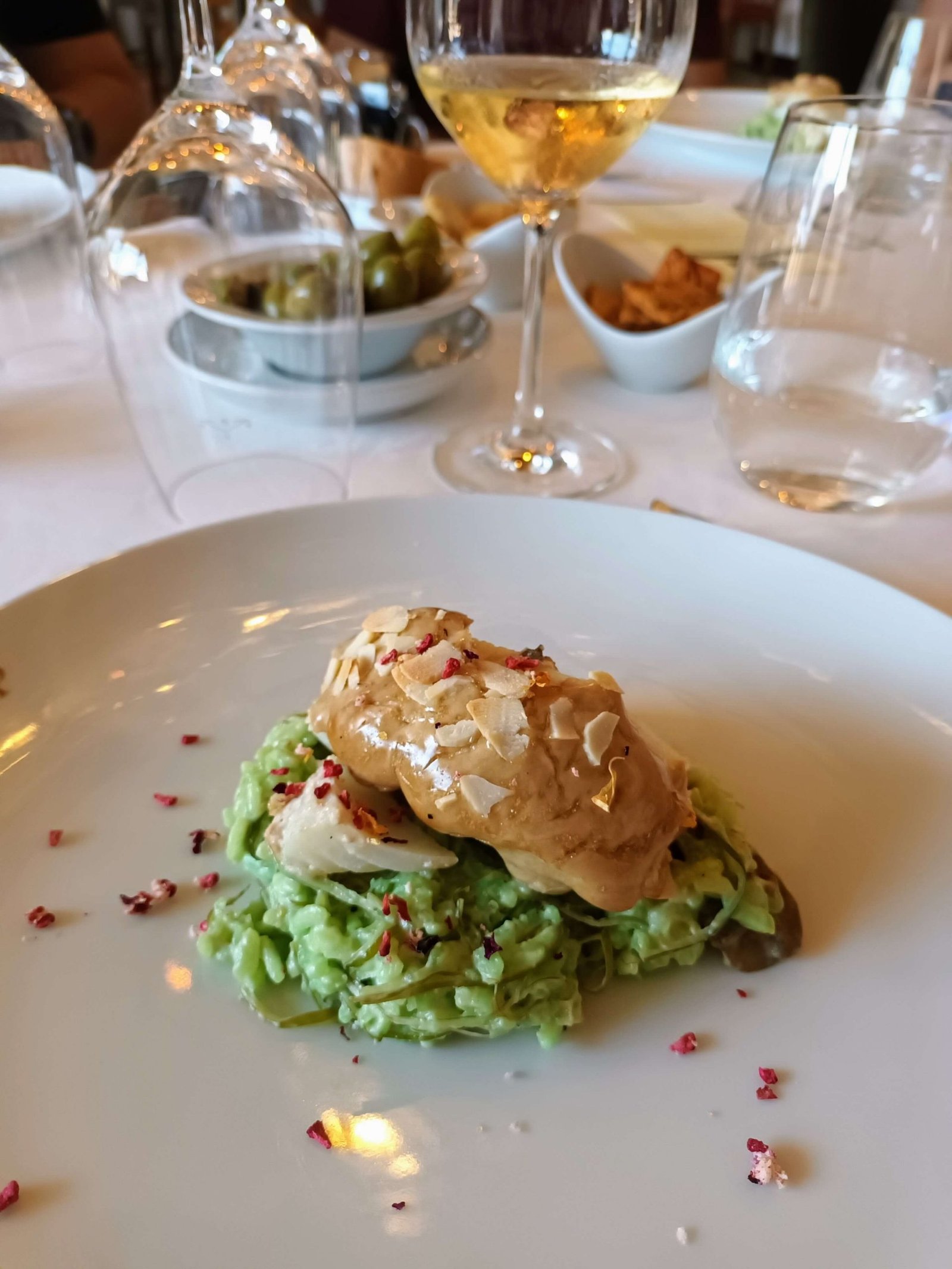
Jaen travel tips
- Getting around: The city centre of Jaen is very walkable, but if you want to explore the surroundings, I suggest hiring a car. Public transport in Spain is very limited, and notoriously unreliable.
- Cultural etiquette: Spanish people eat late (9pm onwards), and you may find shops and other businesses close for a couple of hours during the afternoon.
- Language: The language spoken in Jaen is Andalucian Spanish. English isn’t super widely spoken in Jaen, but you should be able to get by if you have a couple of words of Spanish.
- Further reading: I wrote an entire guide to Jaen, if you want to know more!

13. Brno, Czech Republic
Although it is the second largest city in the Czech Republic, Brno often plays second fiddle to Prague, with the vast majority of tourists never making it out of the capital city.
I spent about a week in Brno for a conference, and by the end of the week, I wanted to stay for another month!
Brno is one of the oldest cities in Europe (it was founded in the year 1030!), and it is home to a strong coffee culture, ancient legends, an underground labyrinth, and the second largest ossuary in Europe!

Foodies, head to Lokal U Caipla for huge slabs of fried cheese and smoked meats, enjoy a tour of Starobrno Brewery, and dine underground in Středověká krčma, a medieval tavern serving gigantic portions of traditional Czech grub.
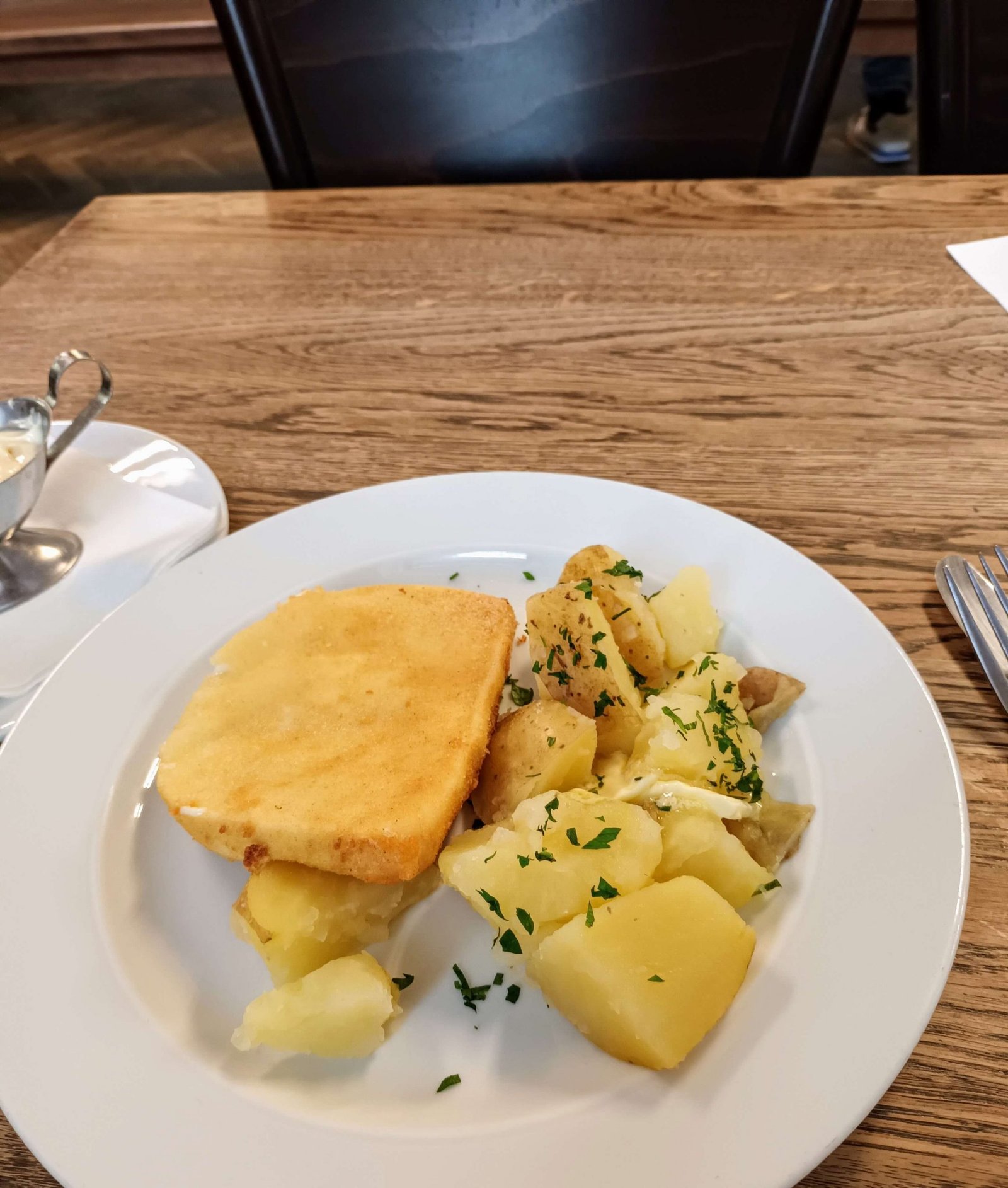
Brno travel tips
- Getting around: The historical centre of Brno is tiny and super walkable. There is also a great tram network in the city.
- Cultural etiquette: Czech people can be reserved at first, but are very warm and funny when you get to know them.
- Language: The official language is Czech, but most people working in hospitality will speak English, as will the younger generation.
- Further reading: I wrote a long article about all the quirky things to do in Brno, if you want to know more about this city!

14. Bari, Italy
Bari is an unassuming gem on the southern coast of Italy, and if you want an Italian city break that’s so relaxed, it may as well be lying down, Bari is the place for you.
I visited Bari with absolutely no idea what to expect, and both my friend and I fell in love with it immediately.
Bari’s Old Town (Bari Vecchia) is home to Italian grandmas making fresh pasta on the streets, laundry blowing in the breeze, and ramshackle homes that ooze shabby chic vibes.
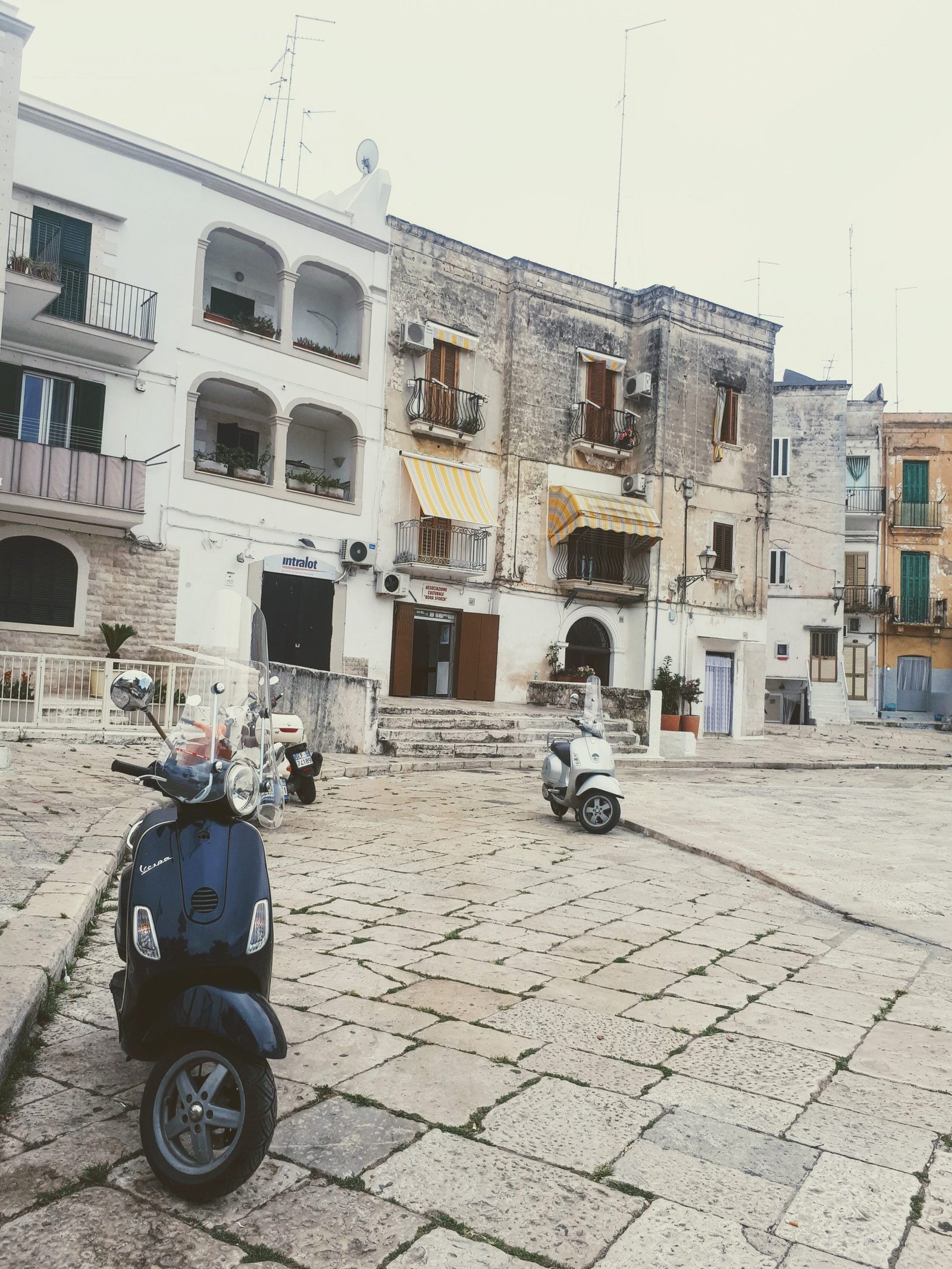
Take a stroll along the tree-lined promenade of Lungomare and pay a visit to the Old Port, where you can admire the blue fishing boats and watch the locals haggling over the best fish.
You should also be sure to indulge in some traditional Barese cuisine, including freshly-baked focaccia, panzerotto, and orecchiette pasta (you can read more about Barese food in my foodie guide to Bari).
Bari travel tips
- Getting around: The historical centre of Bari is very walkable. Outside of that, you can take public transport, but public transport in Italy is not the most efficient.
- Cultural etiquette: Bari is a very traditional, slow-paced city, with an older population. Barese people are fiercely proud of where they’re from, and are welcoming to visitors.
- Language: The official language is Italian, and English is not widely spoken here.
- Further reading: Need more persuading? Here are 7 reasons to visit Bari.
15. Plovdiv, Bulgaria
Located just 2 hours from the capital of Sofia, Plovdiv is the oldest living city in Europe, and is teeming with ancient history, quirky street art, and bohemian cafes and bars.
Admire the Bulgarian Revival buildings in the Old Town, before heading to the huge amphitheatre, which holds concerts and opera performances in the summer!
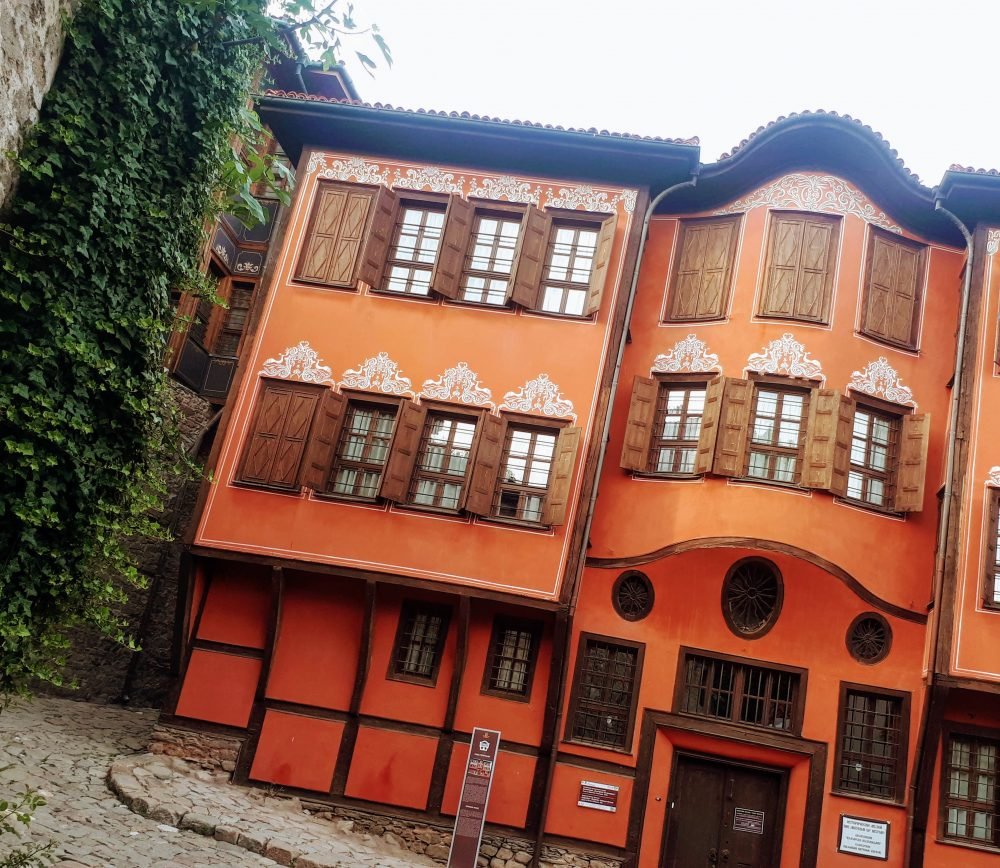
You can also head up to Nebet Tepe (Watch Tower Hill) for tremendous panoramic views over the Carpathian Mountains, the Balkan Peninsula and the other five hills that surround the city.

When you’re in need of a rest, enjoy a Turkish coffee at Dukiana Coffee Roaster, or go for dinner at Pavaj, both located in the bohemian Kapana neighbourhood.
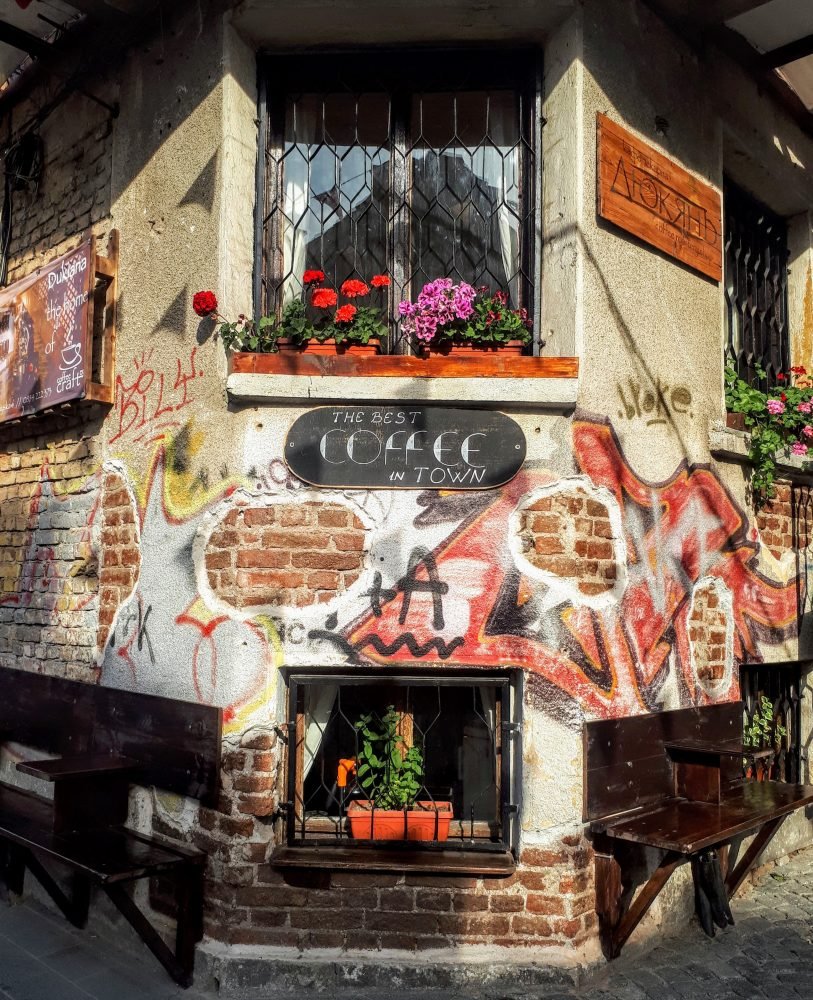
Plovdiv travel tips
- Getting around: Plovdiv is very small and walkable. In the old town, the streets are cobbled, and there are a lot of uphill slopes, so if you’re not too steady on your feet, I recommend staying down in the New Town, or Kapana neighbourhood.
- Cultural etiquette: Bulgarians are known for their strong sense of community, with a culture that can come across as reserved at first. Once you get to know them, they are known for being warm and hospitable.
- Language: The official language is Bulgarian, but everyone I met here spoke English.
- Further reading: I wrote a lengthy guide to Plovdiv here, and a shorter guide to the Old Town of Plovdiv here.
16. Tirana, Albania
With its vast array of things to see and do, not to mention it’s budget-friendly nature, Tirana makes a great European city break.
Tirana is a young and vibrant city with an unparalleled coffee culture, interesting museums (check out the Bunk’Art museums and the House of Leaves secret surveillance museum), and a fascinating history.
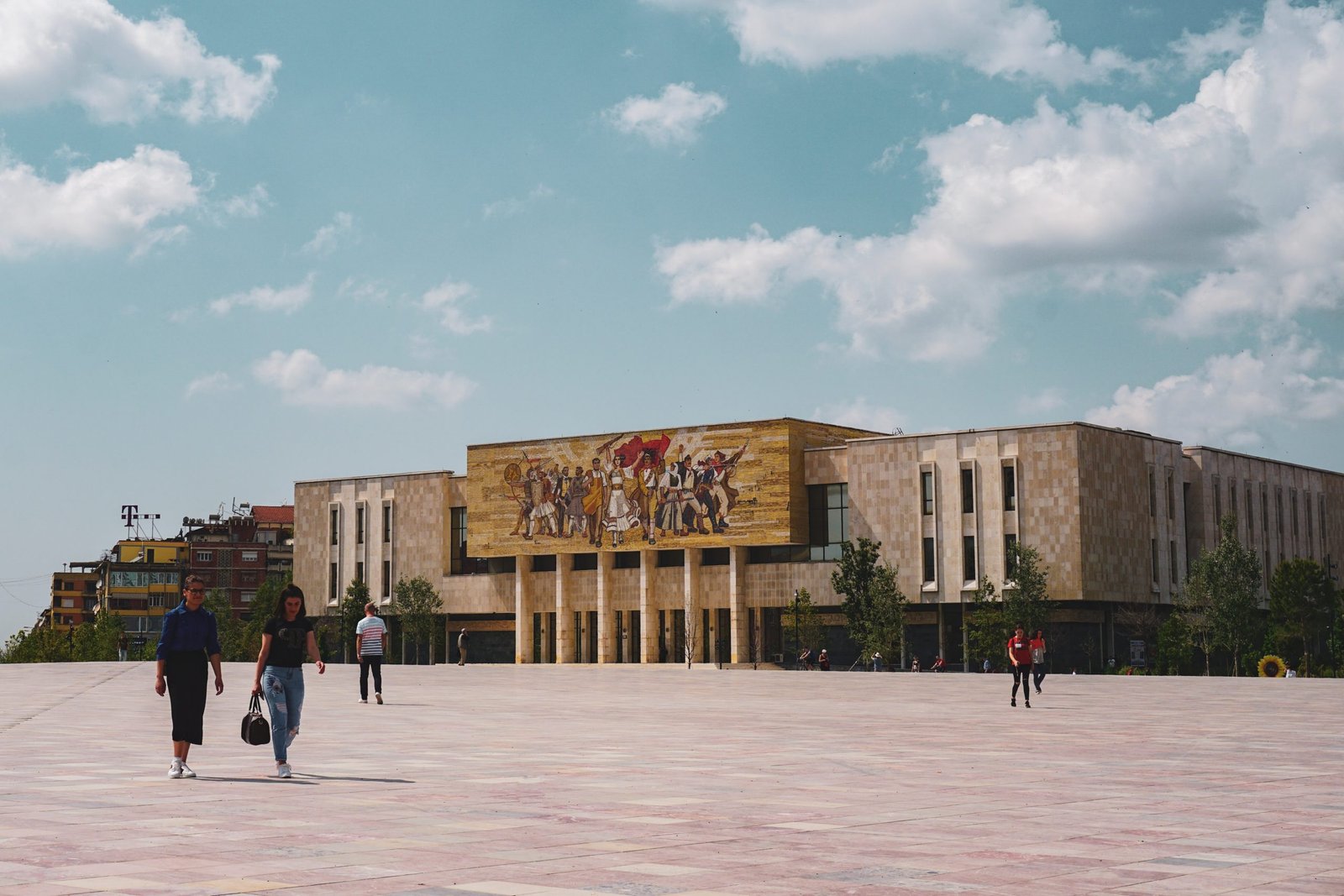
Head to Rozafa Fish Restaurant for elegant seafood dishes, or Tek Zgara Tirones for huge platters of meat, vegetables, salads, beans and goat’s cheese in a relaxed atmosphere.
When you’re full, discover the elegant cocktail bars of Blokku, Tirana’s hipster nightlife area.
Tirana travel tips
- Getting around: Public transport in Tirana is not the best, but the city is pretty walkable.
- Cultural etiquette: Albanians are very hospitable, and if an Albanian offers you a drink of raki, it’s considered rude not to accept!
- Language: The official language is Albanian, but most young Albanians speak English, and the older generation often speak Italian.
- Further reading: I wrote a Tirana itinerary here, and a list of things to do in the city here.
17. Bucharest, Romania
The capital of Romania isn’t on the lists of most travellers, but Bucharest has a surprising amount to offer!
Bucharest has a compact but charming Old Town, where you can wander through narrow alleys, discover hidden courtyards, and marvel at some of the grandest architecture in the city.

Be sure to admire the 1724 Stavropoleos Monastery with a mix of Romanian, Oriental, Byzantine, and late Italian Renaissance influences and 18th-century frescoes.
There’s also Cărturești, one of the most beautiful bookshops in the world, and Caru’ cu Bere, which is the most stunning restaurant in Bucharest.
As well as buildings in the neoclassical, Art Nouveau, and native Brâncovenesc styles, Bucharest also bears the scars of the brutal Soviet regime, with socialist realism and later modernist styles making their presence known in the city.
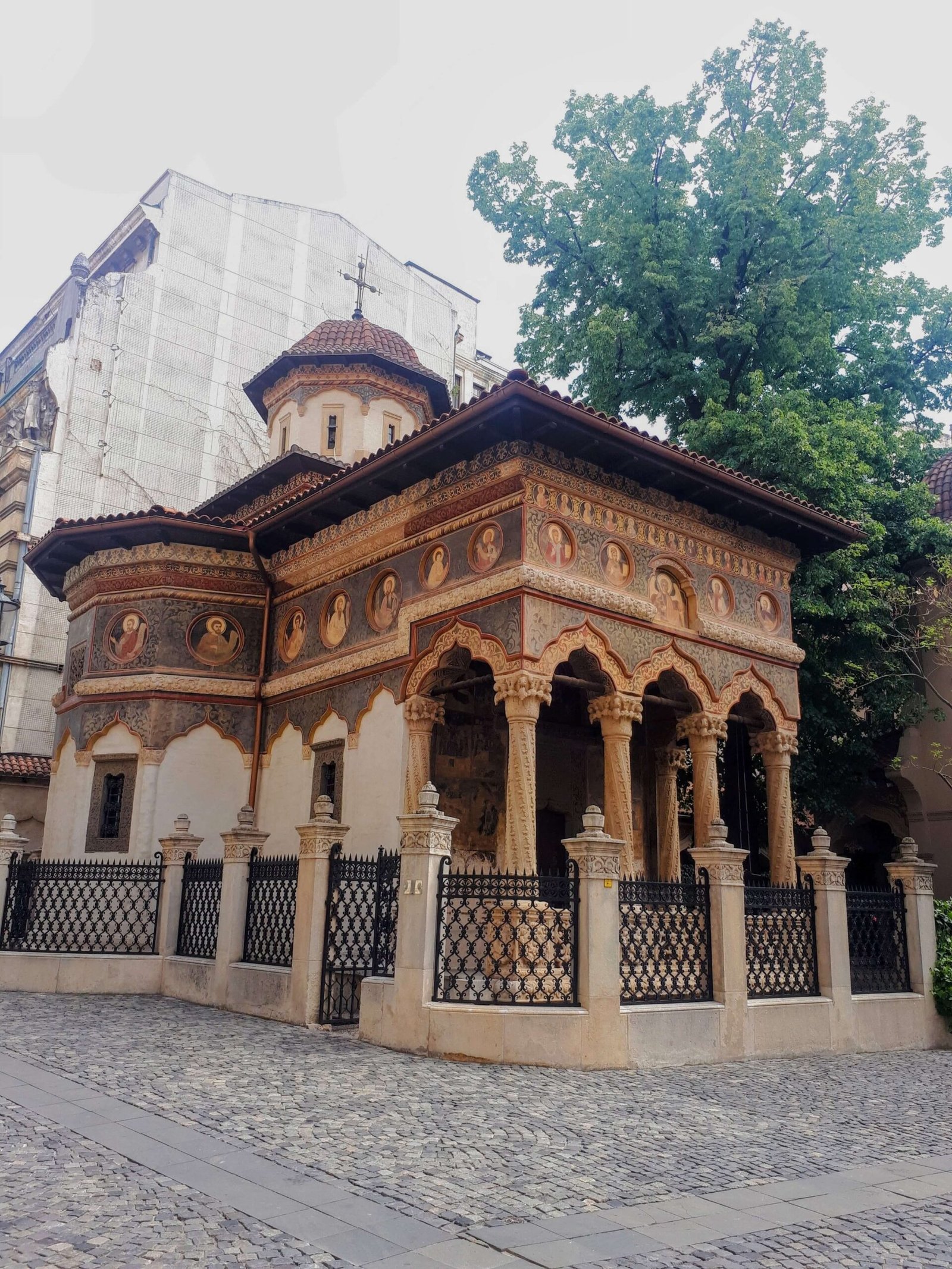
Bucharest is home to countless world-class restaurants, a thriving café culture, and a buzzing nightlife that has been compared to Berlin, so you’ll certainly never be bored here.
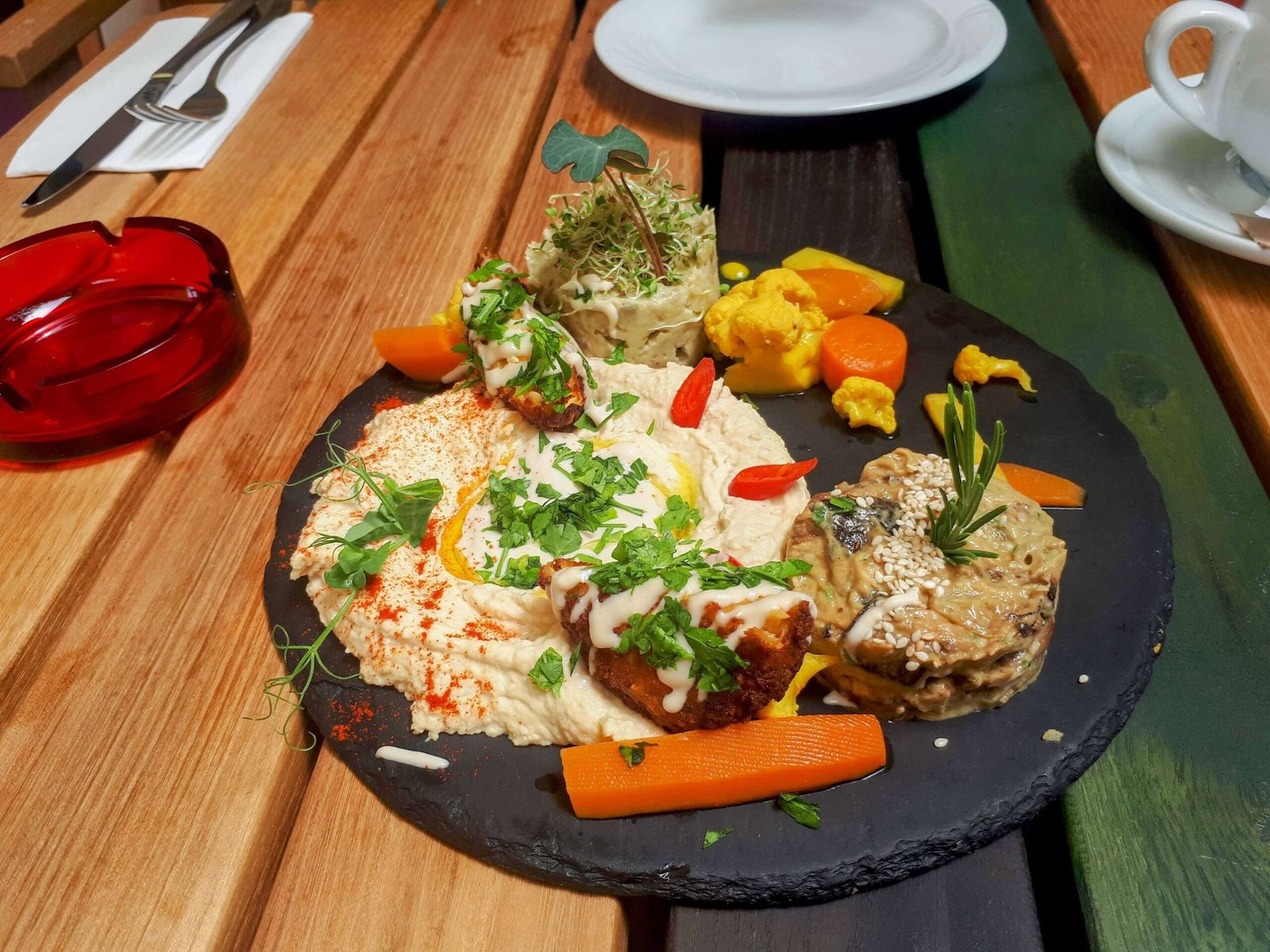
Bucharest travel tips
- Getting around: Public transport in Bucharest is very efficient, but most of the things you’ll want to see as a tourist are very close together, so you should be able to walk everywhere.
- Cultural etiquette: Service with a smile is not really a thing in Romania, so don’t take it personally!
- Language: The official language is Romanian, which is incredibly similar to Italian. Most people in Bucharest that you’ll meet speak English.
- Further reading: I wrote a list of reasons to visit Bucharest here, if you want to know more.
18. Sarajevo, Bosnia and Herzegovina
The capital of Bosnia and Herzegovina is a place that will change you.
Any trip to Bosnia, particularly Sarajevo, is inherently political. You can’t visit and not be exposed to the country’s tragic and bloody history, but that doesn’t mean that it’s a place to be avoided.
War veterans lead tours around the capital city, museums detail the horrors of the Siege of Sarajevo, and bullet holes have left their mark on almost every building in the city.
However, although Sarajevo may be a city of tragedy, it’s also a place where the coffee is strong, the food is hearty, and the people are among the most welcoming you’ll find in all of Europe.
For a quirky activity, wander down the abandoned Olympic bobsleigh track, or head to the White Fortress to watch the most epic sunset in the city.
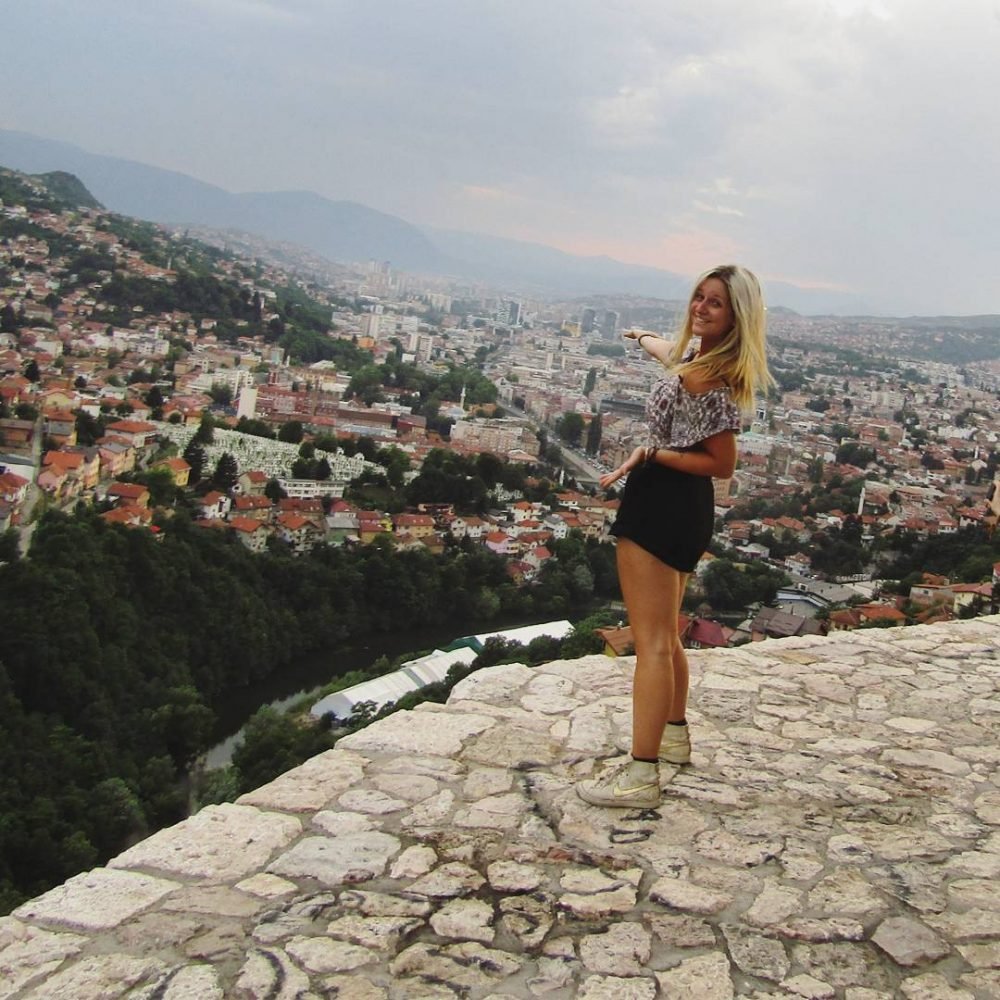
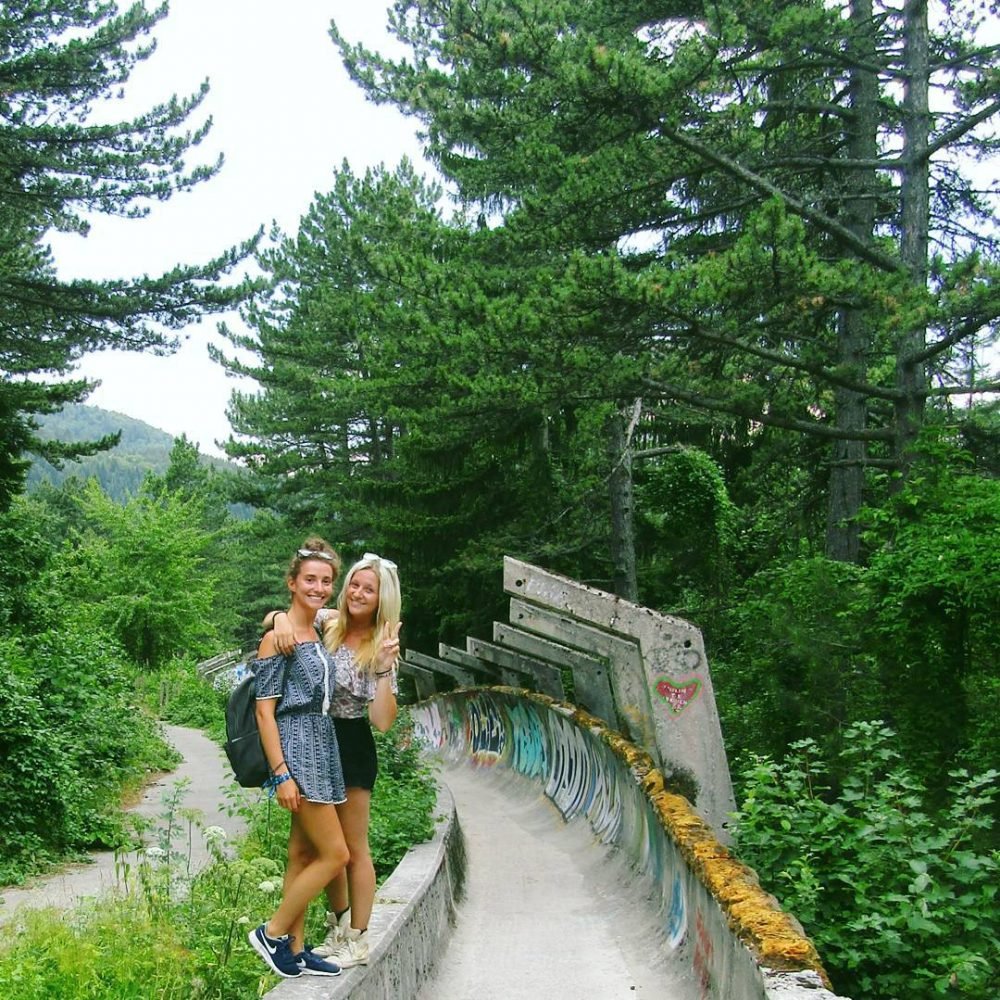
Sarajevo travel tips
- Getting around: Public transport in Bosnia is not the best, and some of the most important things to see are outside of the city, so your best bet is to hire a local guide who can drive you everywhere.
- Cultural etiquette: The Siege of Sarajevo occurred very recently. It is important to be respectful when visiting places like the Tunnel of Hope, sniper’s alleys, and the genocide museum.
- Language: The 3 official languages in Bosnia are Bosnian, Serbian, and Croatian. You should be able to get by using English.
- Further reading: I wrote about my experiences of visiting Sarajevo with a Bosnian war veteran. I also have articles on the War Childhood museum, and the Museum of Crimes Against Humanity and Genocide.

19. Wroclaw, Poland
Colourful buildings, a cathedral island, and anti-communist dwarves (!!!) are just some of the things you’ll find in Wroclaw, one of Poland’s most underrated cities.
Wroclaw is home to 9 universities, so the city has a really young and dynamic vibe, as well as an abundance of wallet-friendly pubs and cafes, and a thriving nightlife.

Head to the main market square to admire the Old Town Hall, a group of Gothic buildings all connected in one complex. Check out the astronomical clock and St. Elisabeth’s Church while you’re there.
Next, meander to The Shambles, which used to be a street full of butcheries but is now home to animal statues dedicated to the animals that were slaughtered for the butchers on this street, and a stunning medley of Medieval Gothic and Baroque architecture.
As you wander the city, you might notice tiny copper dwarves everywhere; these cheeky little blighters were born off the back of a political movement that opposed communism!
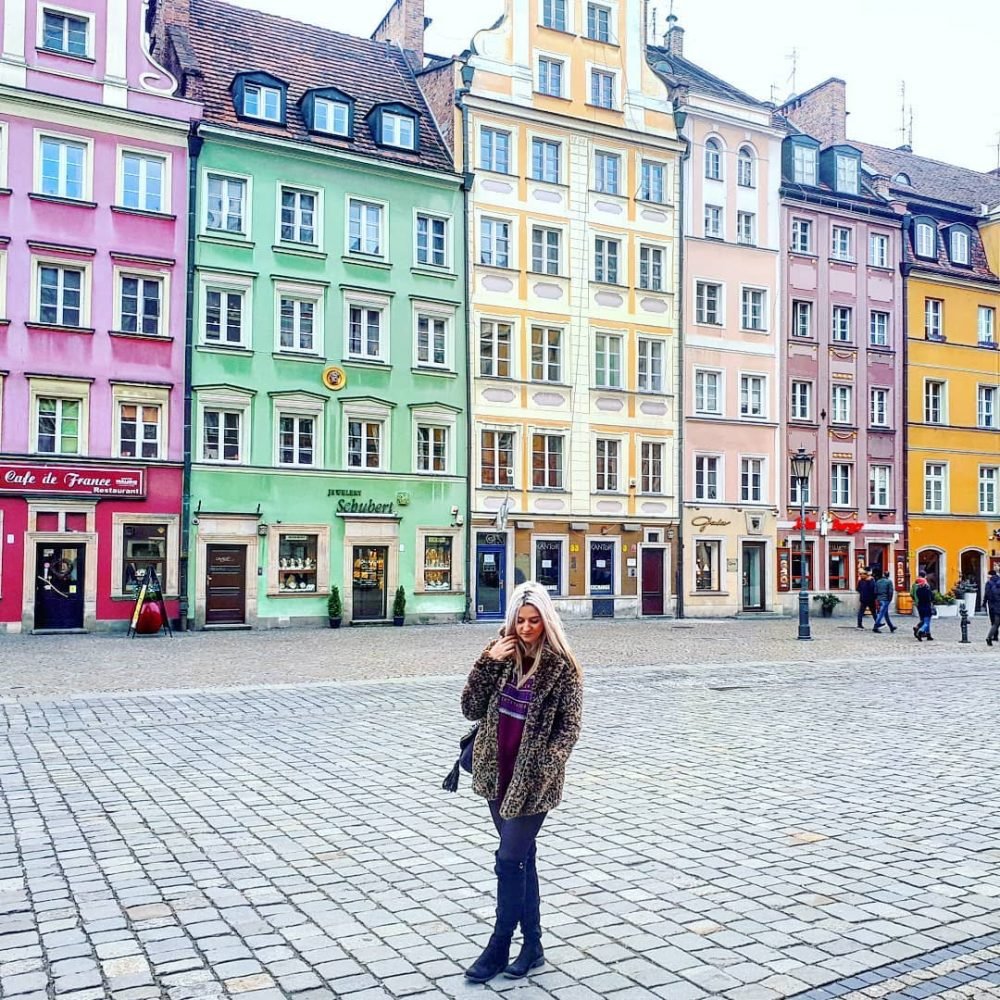
Wroclaw travel tips
- Getting around: Public transport in Wroclaw is excellent, with trams and buses going all over the city. Wroclaw is also a very walkable city.
- Cultural etiquette: Polish people are reserved at first, but when you scratch the surface, they’re the warmest people out there.
- Language: The official language is Polish, but most people in Wroclaw speak at least a little English, with the younger generation having an excellent command of the language. Older Poles may be able to speak Russian.
- Further reading: I’ve written a list of reasons to visit Wroclaw, as well as an article about the famous anti-communist dwarves.
20. Olomouc, Czech Republic
Olomouc may be the Czech Republic’s best kept secret, and in the words of Lonely Planet, Olomouc is ‘the most beautiful city in the Czech Republic!’
Home to an abundance of Baroque and Renaissance architecture, magnificent churches, and its own UNESCO World Heritage site, not to mention great cafes, a lively bar scene and tonnes of hearty local grub, Olomouc really does have it all.

Be sure not to miss the communist astronomical clock on the town hall.
First made in the 1400’s, the clock was badly damaged during the Second World War, and redesigned in the 1950’s, during the Soviet era.
As a result, the clock has a socialist realism design, with the religious figures being scrapped and replaced with more ‘communist-friendly’ ones.
Get there just before midday to see its daily 7-minute show, where the workmen come out from the little windows. The dial on the clock also displays the birthdays of Lenin and Stalin, as well as the International Day of the Worker.
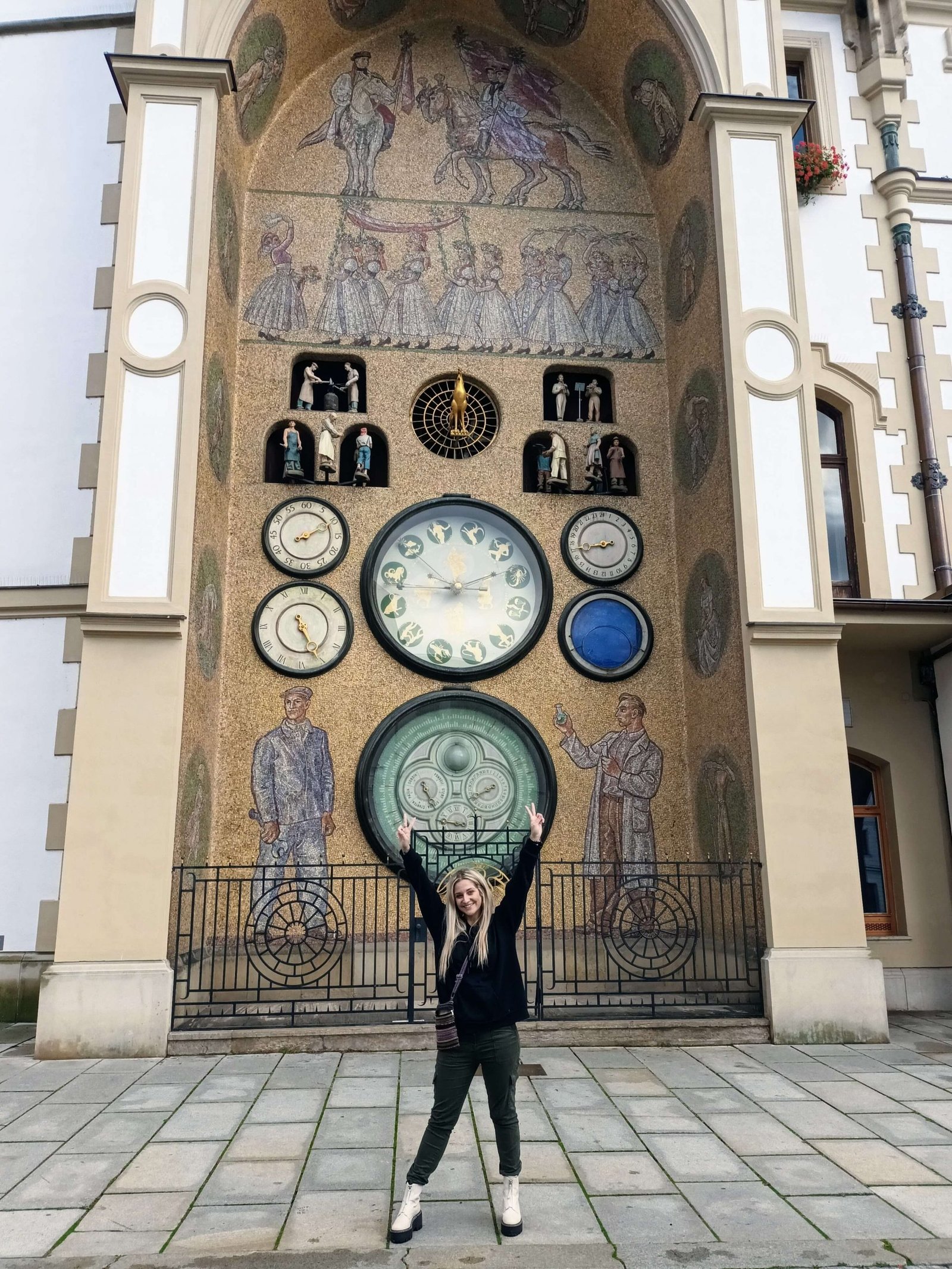
For some local culinary goodness, try some of the local ‘stinky cheese’ (Tvarůžky) with bread and beer, book a wine and chocolate tasting at U Zlatého beránka wine cellar, and enjoy exquisite fine dining inspired by nature at Entree, owned by celebrity chef Premek Forejt.
Beer drinkers can enjoy a guided tour of TVARG Brewery, or visit St. Wenceslas Microbrewery to experience the famous Czech beer bath.
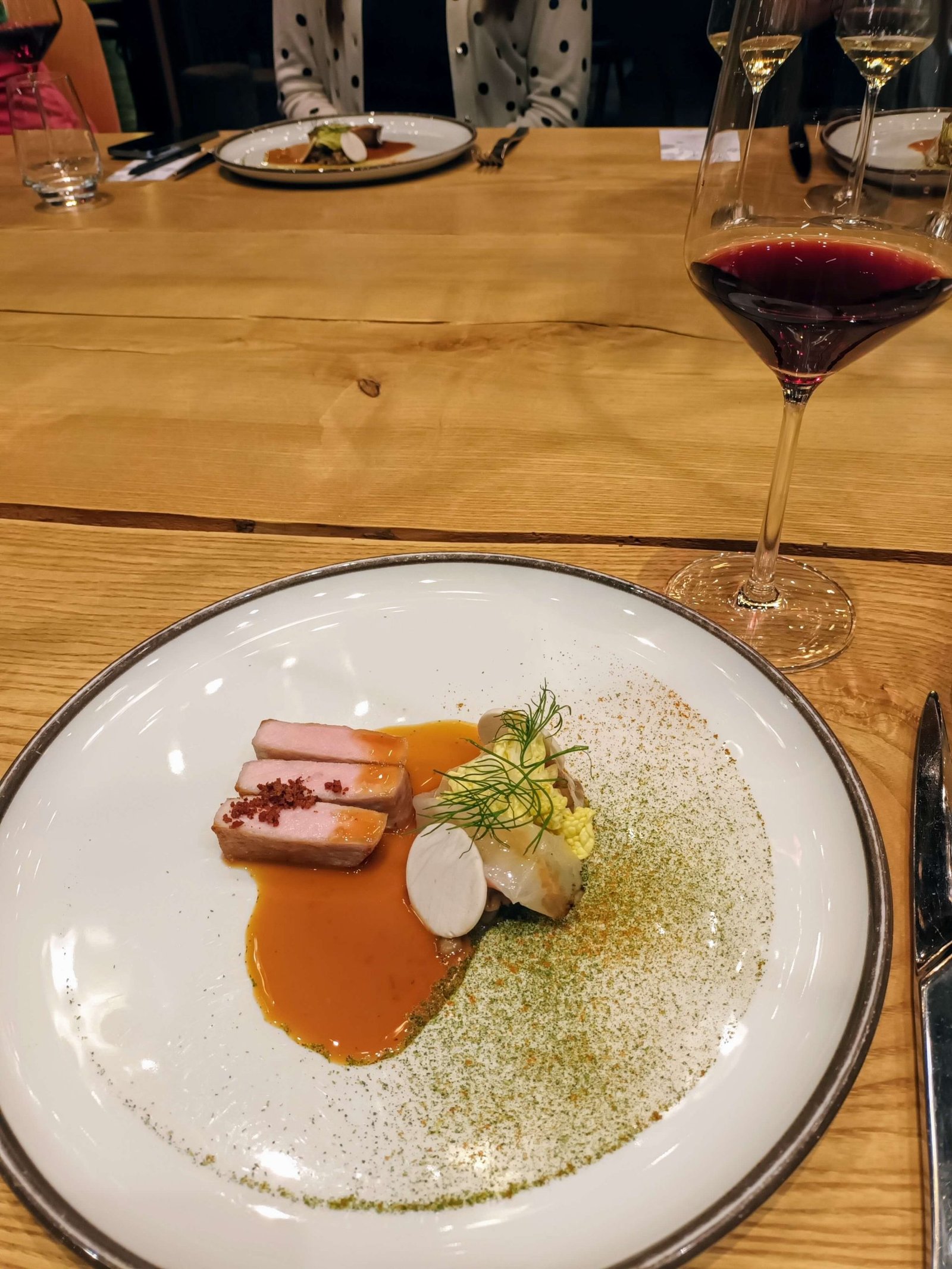
Olomouc travel tips
- Getting around: Olomouc is very walkable, although there are some hilly streets in the historical centre.
- Cultural etiquette: Olomouc is a student city, so there is a very young vibe here. If you want to make friends, the best way to bond with a Czech is over a beer!
- Language: The official language is Czech, but most people in Olomouc speak English.
- Further reading: My list of things to do in Olomouc goes into great detail about this deliciously quirky city.
21. Bratislava, Slovakia
When it comes to capital cities, Bratislava is one of the most underrated places in Europe.
With a dinky, pedestrianised old town, an abundance of coffee shops and beer houses, awe-inspiring medieval architecture, and stodgy comfort food, Bratislava has everything you could want from a European city break.
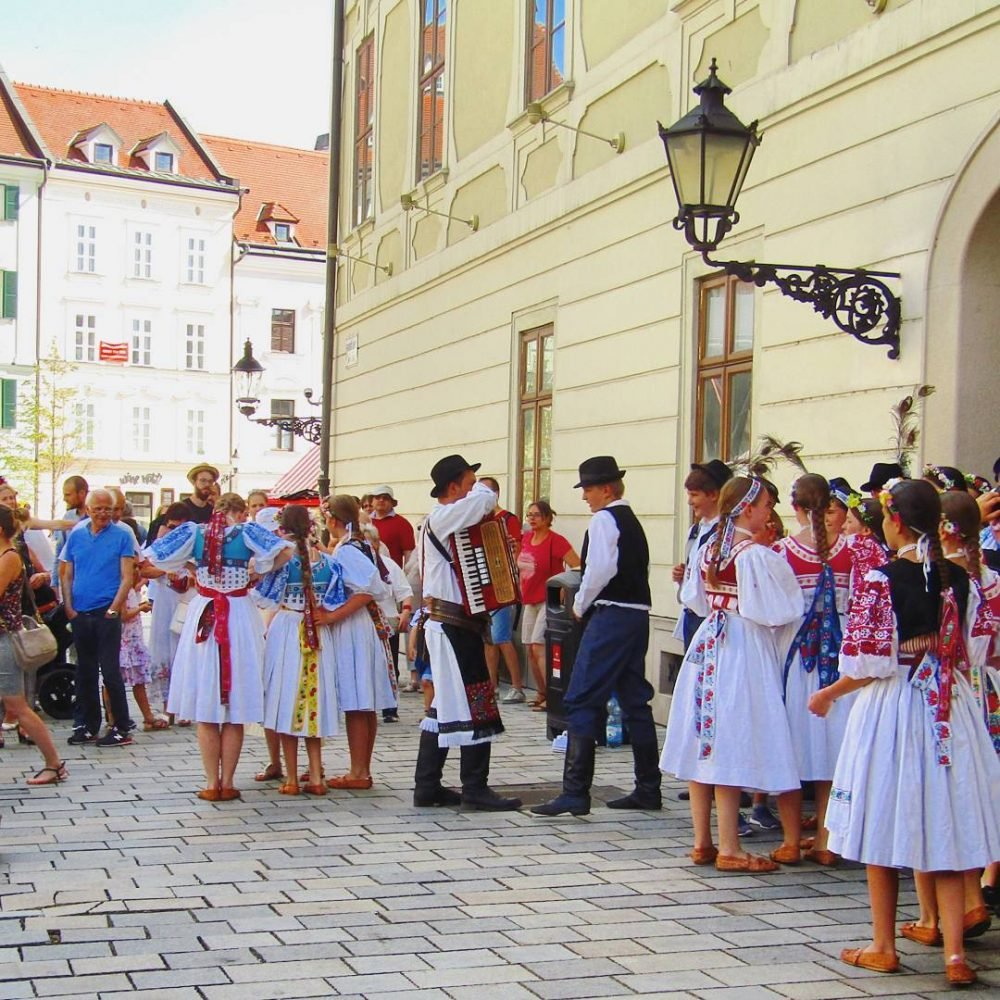
Devour a hearty lunch at Slovak Pub, Bratislava’s largest bar and an institution in the city.
Bryndza halusky is a hearty dish consisting of potato dumplings topped with sheep’s cheese, greasy bacon bits, Speck and sour cream. Be sure to wash it down with a cold beer, made onsite in their very own keg room!
Highlights of Bratislava’s Old Town include Maximilian’s Fountain, Stara Radnica (the courtyard of the old Town Hall), the National Theatre, and St. Martin’s 15th century Gothic Cathedral. You can also find Michael’s Gate, the last of Bratislava’s 4 medieval gates which dates back to the start of the 14th century.
My favourite part of Bratislava Old Town is the abundance of amusing statues, including Schoner Naci, a carpet cleaner who used to love giving flowers to beautiful women, and the ‘Man at Work’, poking his head up from a manhole.

Bratislava travel tips
- Getting around: The centre of Bratislava is tiny, and the Old Town is totally pedestrianised.
- Cultural etiquette: A bit like the Czechs, Slovak people can seem reserved at first, but are very warm and welcoming when you get to know them.
- Language: The official language is Slovak, but most people in Bratislava can speak English.
- Further reading: I have a few posts about Bratislava, including a list of things to do, how to spend 24 hours in the city, and the best hostels in Bratislava.
22. Belgrade, Serbia
From the cobbled streets and colourful flowers of the Bohemian Quarter to the quirky street art, Orthodox churches, and various architectural styles in the city centre, you don’t have to look too far to find Belgrade’s charm.
For architecture lovers, the Temple of St. Sava is the largest Orthodox church in the world, and is definitely a sight to behold.
Other impressive buildings in Belgrade include the Neo-Byzantine St. Mark’s Church, the Neoclassical St. Michael’s Cathedral, and of course, Belgrade Fortress.
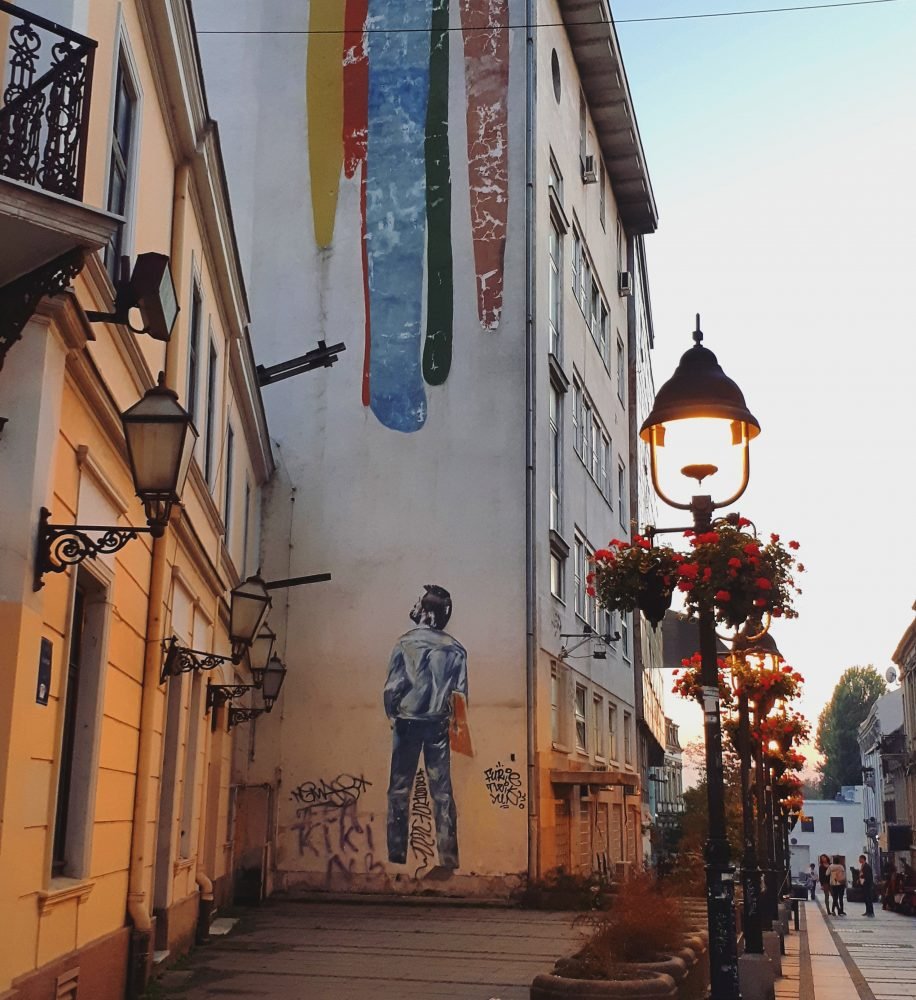
Museums worth checking out include the Nikola Tesla museum, the Museum of Yugoslavia, and the Military Museum.
In terms of food and drink, Belgrade has some of the best coffee culture in Europe, a legendary nightlife scene (in the summertime, party on boats called Splavovi), and world class restaurants.
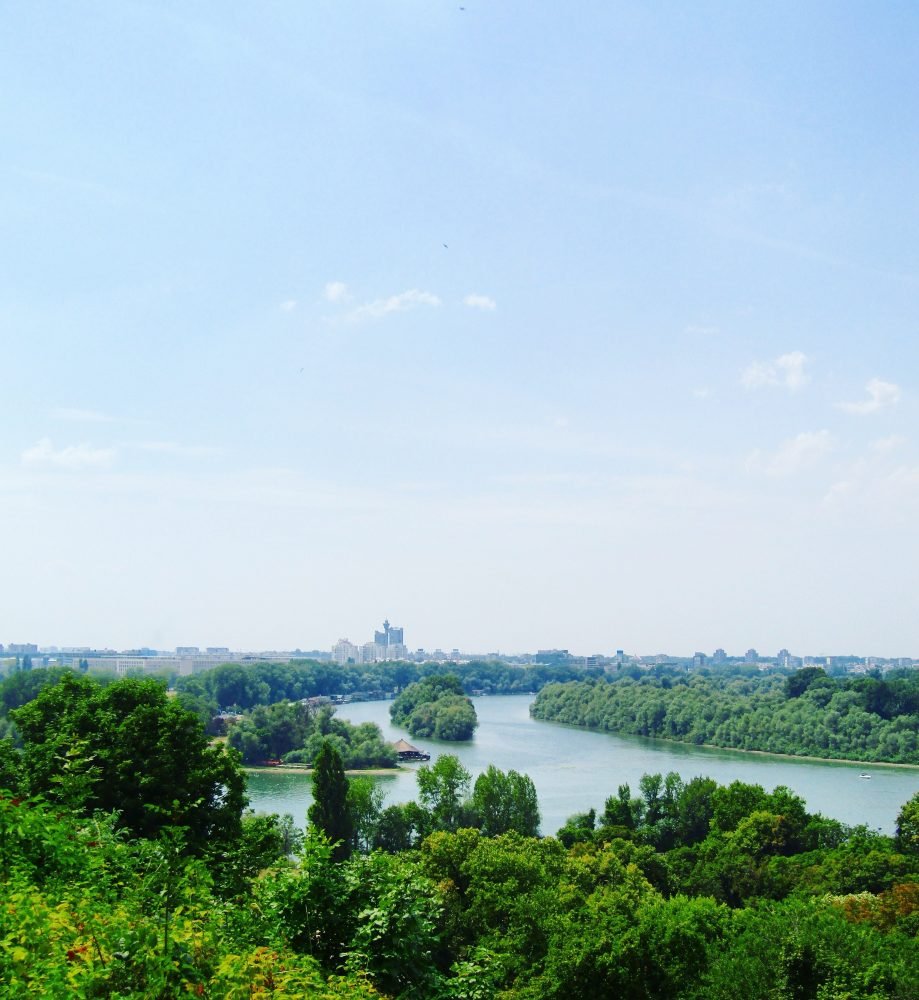
For a truly unique experience, try and catch a movie at the Novi Bioskop Zvezda, an illegal squatted cinema that screens hard-to-find films such as cult classics, activist, queer, and anarchist films.
I went to a screening of an art film while I was in Belgrade, and visiting this strange cinema was certainly one of the more interesting travel experiences I’ve had.
Belgrade travel tips
- Getting around: Public transport in Belgrade isn’t the greatest, but the city is fairly walkable.
- Cultural etiquette: Don’t talk about Kosovo, Srebrenica, or Bosnia!
- Language: The official language is Serbian, but most young people in Belgrade can speak English.
- Further reading: I wrote a long list of reasons to visit Belgrade after spending a month in the city.
23. Brasov, Romania
Brasov was my favourite place in all of Romania, and I travelled the country quite extensively!
Brasov is the gateway to Transylvania, and this charming city feels more like a quaint village at times!
Brasov’s medieval market square is where you’ll find Council House, Brasov’s 15th century town hall, the clock tower (or ‘Trumpeter’s Tower’), and an abundance of bars and restaurants.
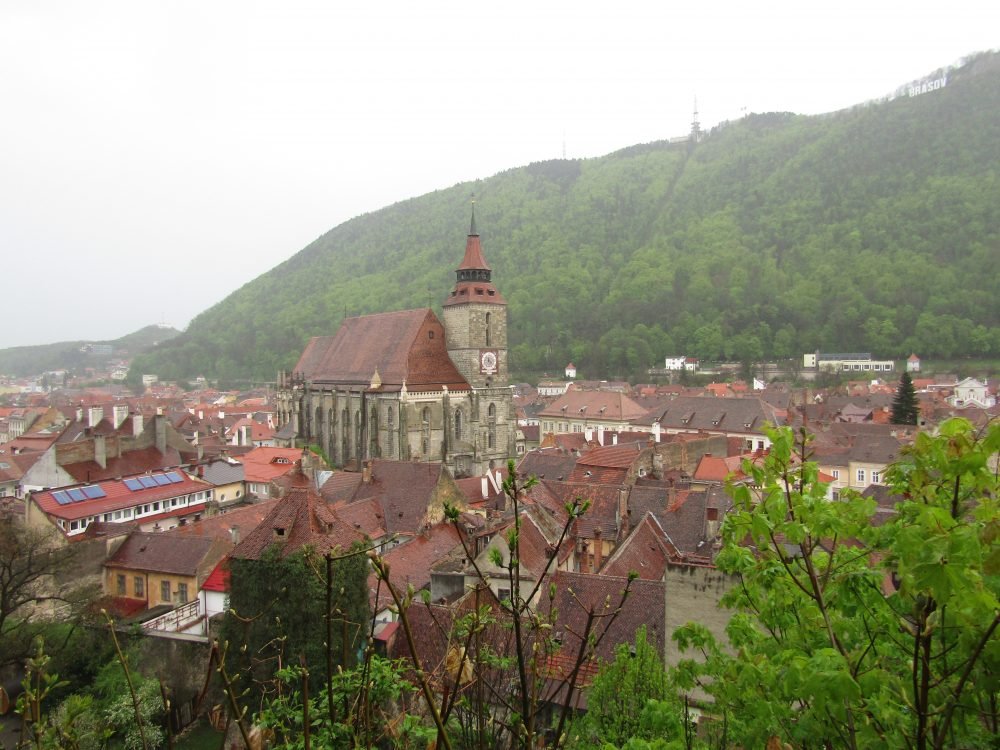
Biserica Neagră, or ‘The Black Church,’ is the largest Gothic church in Eastern Europe, and its name comes from the fact that in 1689, a huge fire burned the church, and the walls inside darkened with smoke.
The church is home to the biggest mechanical organ in Romania, as well as the largest collection of Anatolian carpets outside of Türkiye.
The famous Bran Castle (Dracula’s Castle) is just a 45 minute bus journey out of town, but if you don’t fancy the trip, you could easily spend a few days exploring the medieval streets of the Old Town.
Fans of German cuisine will enjoy visiting Brasov’s many German beer halls, and coffee shop addicts must visit Dr. Jekelius Pharmacy Café, an old-fashioned coffee shop with stunning olde-worlde décor, a wonderful selection of herbal teas, and fantastic cocktails.
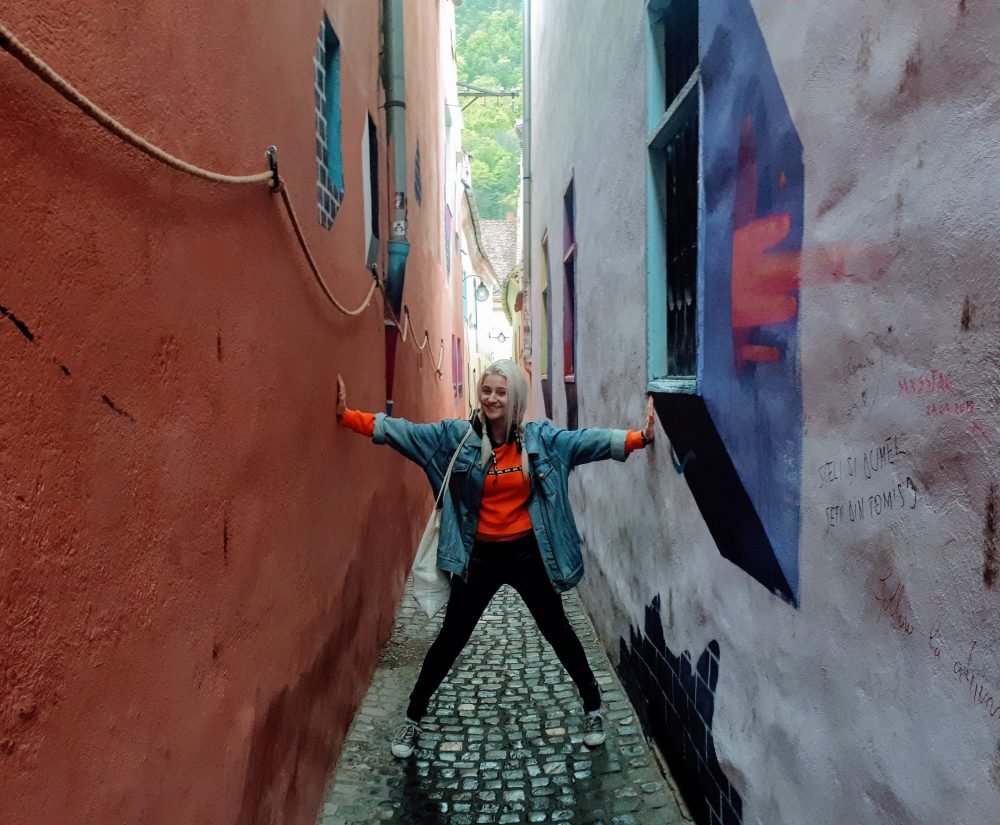
Brasov travel tips
- Getting around: The centre of Brasov is super walkable. For day trips, the public transport system in Romania is excellent. I took a lot of trains here and was always very impressed.
- Cultural etiquette: Romanian people may not seem overly friendly at first (especially those working in hospitality!), but they’re a lovely bunch really.
- Language: The official language is Romanian, but most people in Brasov can speak English.
- Further reading: I wrote a long list of things to do in Brasov after spending a week in the city on a solo trip.
24. Pristina, Kosovo
After visiting Pristina twice and experiencing first-hand the Kosovar hospitality, great food, and interesting sights, I found this city to be one of Europe’s biggest hidden gems.
Things to see include the NEWBORN monument, the National Library of Kosovo (which might be the ugliest building in the world), the Heroinat Memorial, and the Old Bazaar.
To learn more about Kosovo, visit the ethnographic museum, or attend a Free Walking Tour of the city.
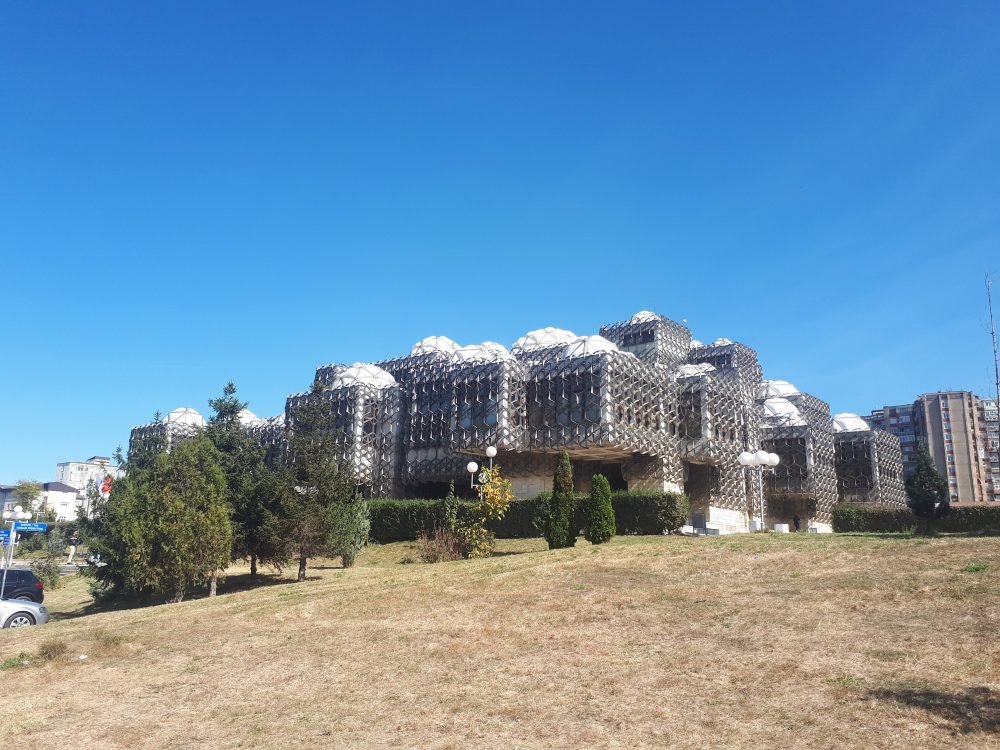
Renaissance is the best restaurant in the city, with a set menu that changes every night and the president of Albania among the long list of satisfied diners here.
For a no frills, Balkan experience, Te Nazi serves up huge portions of comfort food at rock bottom prices, and if you want to experience Pristina’s nightlife, Soma Book Station is the cocktail bar where all the young and beautiful Kosovars hang out.
Pristina travel tips
- Getting around: The centre of Pristina is very walkable. There isn’t much in the way of public transport in the city, but taxis are very cheap.
- Cultural etiquette: Kosovo is Kosovo. Not a part of Serbia.
- Language: Albanian and Serbian are the official languages in Kosovo, with Albanian being spoken by the majority. Most people in Pristina can speak English.
- Further reading: Feel free to check out my list of things to do in Pristina, or about my experience visiting the nearby bear sanctuary.

Quick Recap
Best destination for history buffs?
Sarajevo.
Best destination for budget travellers?
Tirana, Ohrid, Tbilisi.
Best destination for couples?
Bologna, Brasov.
Best destination for backpackers?
Tirana, Belgrade, Riga.
Best destination for families?
Valletta, Ohrid, Bari.
Best destination for solo travellers?
Lyon, Brno, Olomouc.
Best destination for solo females?
Ljubljana, Wroclaw.
Best destination for foodies?
Tbilisi, Bologna, Lyon.
Best destination for adventurous travellers?
Tbilisi, Sarajevo.
The Most Underrated Places in Europe | Final Thoughts
These are just a few of the most underrated and unique destinations in Europe, offering a refreshing alternative to the Amsterdams and Barcelonas of the world.
With diverse cultural experiences, fascinating historical insights, and natural beauty, each of these beautiful European cities has something unique to offer.
From the vibrant streets of Tbilisi to the medieval charm of Brasov, each destination on this list has its own distinct charm and allure, and is just waiting to be discovered.
So, next time you’re planning a trip, take a break from overcrowded tourist hotspots and choose somewhere a little different!
Whether you’re wandering through the medieval streets of Ghent, putting on your pasta pants in Bologna, or basking on the sunny shores of Ohrid, these European hidden gems promise unforgettable memories and deeply enriching experiences.
That’s all I’ve got for today, but as always, if you have any questions, please don’t hesitate to reach out in the comments section below!
Until next time,
XOXO
If you liked this article and would like to support my work, please click the button above to donate a couple of bucks and buy me a coffee. The ad revenue that I receive on this website is minimal, so support from my readers enables me to keep creating content that you (hopefully!) love to read.

